2018-01-11 - Nº 141
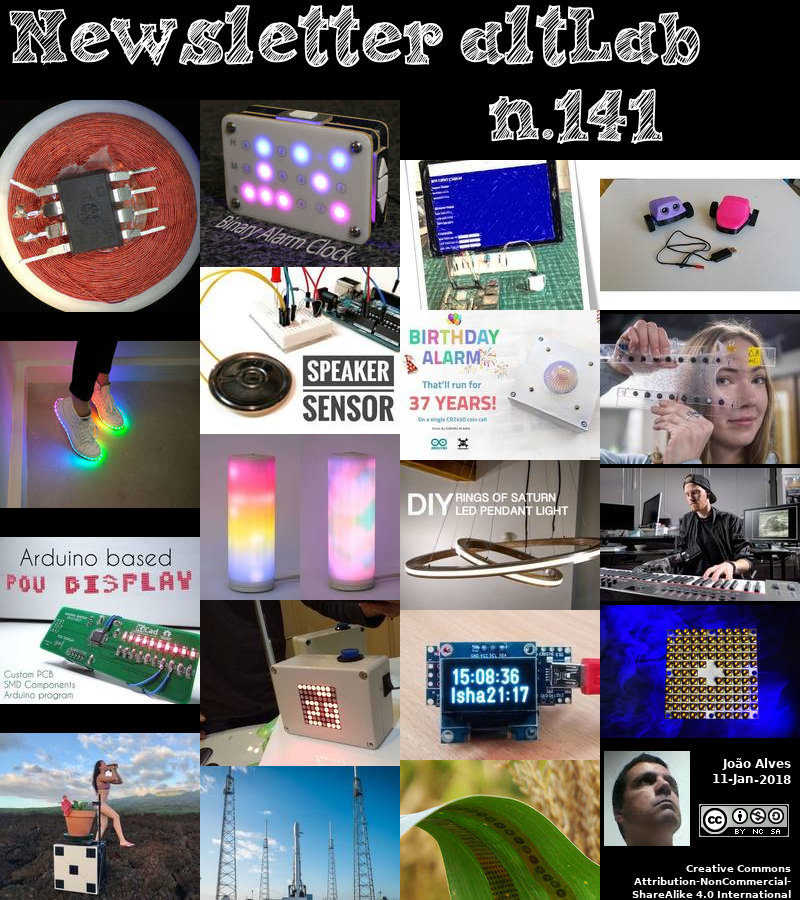
Editorial
Esta é a Newsletter Nº 141 que se apresenta com o mesmo formato que as anteriores. Se gostar da Newsletter partilhe-a!
Todas as Newsletters encontram-se indexadas no link.
Esta Newsletter tem os seguintes tópicos:
Faz hoje anos que nascia, em 1872, George Washington Pierce. Este inventor Norte-americano foi pioneiro em radio-telefonia e professor notável de engenharia de telecomunicações. Ele fez o trabalho que levou à aplicação prática de uma variedade de descobertas experimentais em piezoelétrica e magnetostricção. Ele desenvolveu o oscilador Pierce, que utiliza cristal de quartzo para manter as transmissões de rádio precisamente na frequência atribuída e fornecer precisão similar para medidores de frequência. Ele foi igualmente responsável pela formula de cálculo matemático das propriedades de radiação das antenas de rádio; invenção do tubo de descarga de vapor de mercúrio, que era o precursor do tirantron; invenção de um método de gravação de som em filme; e geração de som por morcegos e insectos.
Faz também anos hoje que nascia, em 1875, Frederick Mark Becket. Este Metalúrgico canadiano detinha mais de cem patentes, cobrindo uma ampla gama de produtos eléctricos para forno e produtos químicos, nomeadamente ligas de ferro, carboneto de cálcio e aços especiais de crómio. Ele desenvolveu um processo de uso de silício em vez de carbono como um agente redutor na produção de metais, tornando as ligas de ferro com baixo teor de carbono e certos aços práticos. Os seus processos para a produção de ligas de ferro de baixo carbono tiveram aplicação mundial.
Por fim, faz anos hoje que nascia, em 1895, Laurens Hammond. Este inventor e empresário norte-americano ficou conhecido pela criação do órgão electrónico de Hammond. Fascinado pela ciência, Hammond patenteou a sua primeira invenção, uma transmissão de automóveis, enquanto era muito jovem. Em 1909, ele vendeu sua ideia para um barómetro barato e sensível, e em 1920, ele vendeu o seu design para um relógio "sem engrenagens". Em 1933, ele abriu um piano antigo retirando todo o seu conteúdo com excepção do teclado para usar como controlador. Ele experimentou várias maneiras diferentes de gerar o som até encontrar o que parecia melhor - o gerador do "tonewheel", com o qual ele fundou a Hammond Organ Company. Durante a Segunda Guerra Mundial, Laurens ajudou a projectar controlos de mísseis guiados com patentes para orientação de bombas.
Nas semana que passou ficámos a saber que um empregado da FedEx do Tennessee conseguiu descobrir, um novo número primo da classe de números primos de Mersenne - o 50º. Os primos de Mersenne são um grupo de números primos nomeados em honra do monge francês Marin Mersenne, que estudou os números há mais de três séculos. O número tem mais de 23 milhões de dígitos - 1 milhão de dígitos a mais do que o 49º prémio Mersenne conhecido, descoberto em Janeiro de 2016. Este número foi descoberto através dos esforços conjugados do projecto GIMPS - Great Internet Mersenne Prime Search. O número, designado de M77232917, é calculado elevando o número 2 à potência 77.232.917 e depois subtraindo 1.
Também esta semana, a Wifi-Aliance fez o anuncio de um novo standard de segurança de redes Wifi - WPA3. Este vem responder às necessidades de substituir o actual WPA2 que tem alguns problemas no seu design nomeadamente o que ficou conhecido como KRACK e que está relacionado com o seu mecanismo de "four-way handshake". Para ultrapassar esta situação este novo protocolo corrige esta falha e resta agora esperar que a adopção seja rápida por parte dos fabricantes de Hardware.
Ainda esta semana ficámos a saber que a tentativa da SpaceX para lançar no espaço um "payload" secreto designado por Zuma terá falhado o seu objectivo e a carga se deve ter perdido. Esta foi a primeira vez que a SpaceX teve que usar um sistema de 3 foguetões combinados. O lançamento aparentemente foi um sucesso mas posteriormente a informação que apareceu no meus de comunicação indicou que uma falha qualquer terá provocado a perda. Como se trata de uma missão da qual pouco se sabe a informação é muito escassa.
A Boeing apresentou um protótipo funcional de um drone de transporte de carga. Em menos de três meses, os engenheiros da Boeing projectaram e construíram o protótipo do CAV, que fica a quatro metros do chão, mede 15 por 18 pés e pesa mais de 700 libras. É equipado com oito lâminas de hélice com contra-rotação e baterias Boeing personalizadas que permitem o voo vertical.
Está também a decorrer esta semana a CES2018 em Las Vegas e têm sido feitos anúncios de diversos produtos que que irão brevemente aparecer no mercado. Destes destacam-se as apresentações dos novos processadores da Intel com um processador gráfico Radeon. A AMD apresentou também os seus novos processadores Ryzen e Radeon. A Toyota lançou um ecossistema de mobilidade de veículos. A Intel apresentou avanços na tecnologia de "quantum computing" criando um chip teste de 49-qubit. A HyperX apresentou o primeiro módulo de memória sincronizado por infravermelhos. A Qualcomm apresentou um sistema de bluetooth audio de muito baixo consumo que poderá revolucionar ainda mais esta área. E por fim a Razer apresenta o projecto Linda que se trata de um Híbrido entre um portátil e um smartphone. Atrás das cenas e junto ao evento foi possível presenciar um show de "strip" com robôs.
Na Newsletter desta semana apresentamos diversos projetos de maker. É apresentada a revista newelectronics de 9 de Janeiro e dois livros, introdução ao Linux e "Linux from Scratch" Versão 8.1.
 João Alves ([email protected])
João Alves ([email protected])
O conteúdo da Newsletter encontra-se sob a licença  Creative Commons Attribution-NonCommercial-ShareAlike 4.0 International License.
Creative Commons Attribution-NonCommercial-ShareAlike 4.0 International License.
Novidades da Semana

FedEx employee from Tennessee discovers largest known prime number
"A FedEx employee from Tennessee has made mathematical history with the discovery of the largest known prime number. Jonathan Pace, a 51-year-old engineer living in Germantown, Tennessee, discovered the number after running a special piece of computational software for six days straight. Pace is a volunteer for a project called the Great Internet Mersenne Prime Search (GIMPS). Thousands, armed with "reasonably modern" computers and GIMPS software, volunteer on the project, according to the GIMPS website. The number, called M77232917, is the 50th "Mersenne prime" to be discovered. Mersenne primes are a group of prime numbers named for the French monk Marin Mersenne, who studied the numbers more than three centuries ago." [...]

Wi-Fi Alliance introduces security enhancements
"Wi-Fi Alliance® introduces enhancements and new features for Wi-Fi Protected Access®, the essential family of Wi-Fi CERTIFIED™ security technologies for more than a decade. Wi-Fi Alliance is launching configuration, authentication, and encryption enhancements across its portfolio to ensure Wi-Fi CERTIFIED devices continue to implement state of the art security protections. WPA2™ provides reliable security used in billions of Wi-Fi® devices every day, and will continue to be deployed in Wi-Fi CERTIFIED devices for the foreseeable future. Wi-Fi Alliance will continue enhancing WPA2 to ensure it delivers strong security protections to Wi-Fi users as the security landscape evolves. Advanced Wi-Fi applications will rely on WPA2 with Protected Management Frames, broadly adopted in the current generation of Wi-Fi CERTIFIED devices, to maintain the resiliency of mission-critical networks. New testing enhancements will also reduce the potential for vulnerabilities due to network misconfiguration, and further safeguard managed networks with centralized authentication services." [...]
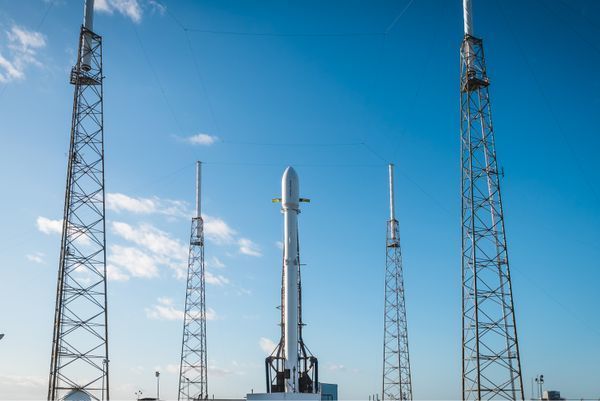
SpaceX apparently lost the classified Zuma payload from latest launch
"SpaceX’s latest rocket may have launched successfully – but the mission didn’t end as a win. The Zuma payload it was carrying, a mysterious classified piece of cargo for the U.S. government believed to be a spy satellite, was lost after it failed to separate from the second stage of the rocket after the first stage of the Falcon 9 separated as planned and returned to Earth. The WSJ reports, and we’ve confirmed separately, that the payload is thought to have fallen back through the Earth’s atmosphere after reaching space, because of the failure to separate. The failure is one that can happen when cargo doesn’t properly detach as planned, since the second stage is designed to fall back to Earth and burn up in re-entry. SpaceX had launched as planned on January 7 in its target window, and recovered the first stage of the booster with a landing at its Cape Canaveral facility. Because of the nature of the mission, coverage and information regarding the progress of the rocket and its payload from then on was not disclosed." [...]
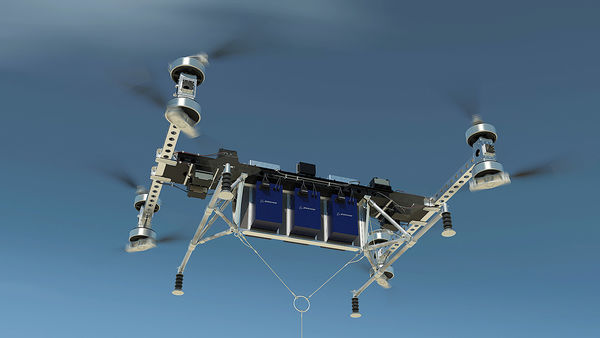
Unlocking the Future of Flying
"A new Boeing unmanned aerial vehicle prototype could shape 21st century autonomous air travel and transport. Boeing is accelerating breakthrough advancements in autonomous air travel. It recently completed initial flight tests of an electric vertical-takeoff-and-landing (eVTOL) unmanned cargo aerial vehicle (CAV) prototype. The innovative platform is designed to test and evolve Boeing’s autonomy technology for future aerospace vehicles. In less than three months, Boeing engineers designed and built the CAV prototype, which stands four feet off the ground, measures 15 by 18 feet and weighs more than 700 pounds. It is outfitted with eight counter-rotating propeller blades and custom Boeing batteries that allow for vertical flight." [...]
Outras Notícias
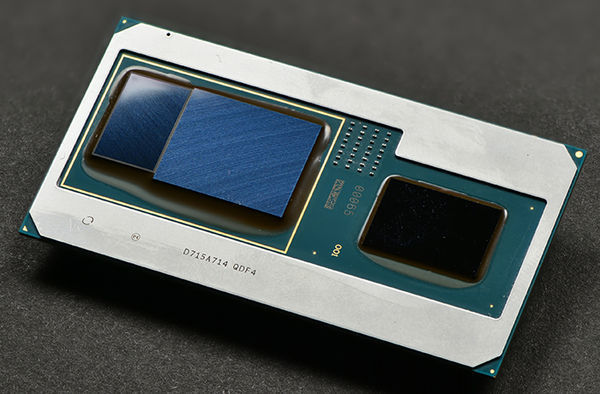
New 8th Gen Intel Core Processors with Radeon RX Vega M Graphics Offer 3x Boost in Frames per Second in Devices as Thin as 17 mm
"Today, Intel is launching a first-of-its kind processor: the 8th Gen Intel® Core™ processor with Radeon™ RX Vega M Graphics. Packed with features and performance crafted for gamers, content creators and fans of virtual and mixed reality, it expands Intel’s portfolio thanks to its optimization for small form factors like 2 in 1s, thin and light notebooks, and mini PCs. More: 8th Gen Intel Core with Radeon RX Vega M Graphics (Product Overview) | 8th Gen Intel Core (Press Kit) | 2018 CES (Press Kit) Among the devices launching with this processor: new thin and lightweight 2 in 1s from Dell* and HP* as well as the most powerful NUC Intel has ever introduced. The new 8th Gen Intel Core processor will come in two configurations: 8th Gen Intel Core processor with Radeon™ RX Vega M GL Graphics (65W total package power) 8th Gen Intel Core processor with Radeon™ RX Vega M GH Graphics (100W total package power), which features an unlocked configuration Setting the Stage for Continued Innovation Intel first shared initial details about this new addition to the 8th Gen Intel Core processor family in early November. It brings together the Intel quad-core CPU, Radeon RX™ Vega M graphics and 4GB of dedicated HBM2 using Intel’s Embedded Multi-Die Interconnect Bridge (EMIB) technology. EMIB acts as a high-speed intelligent information bridge between the GPU and HBM2 and reduces the usual silicon footprint to less than half that of discrete components implemented separately." [...]

AMD Redefines High-Performance Computing with New Processor and Graphics Products Preview at CES 2018
"Building on the global enthusiasm generated in 2017 by Ryzen™ processors and Radeon™ graphics technology, AMD (NASDAQ: AMD) today detailed its forthcoming roll-out plan for its new and next generation of high-performance computing and graphics products during an event in Las Vegas just prior to the opening of CES 2018. Alongside announcing the first desktop Ryzen™ processors with built-in Radeon™ Vega Graphics, AMD also detailed the full line up of Ryzen™ mobile APUs including the new Ryzen™ PRO and Ryzen™ 3 models, and provided a first look at the performance of its upcoming 12nm 2nd generation Ryzen™ desktop CPU expected to launch in April. In graphics, AMD announced the expansion of the "Vega" family with Radeon Vega Mobile and that its first 7nm product is planned to be a Radeon "Vega" GPU specifically built for machine learning applications. "We successfully accomplished the ambitious goals we set for ourselves in 2017, reestablishing AMD as a high-performance computing leader with the introduction and ramp of 10 different product families," said AMD President and CEO Dr. Lisa Su. "We are building on this momentum in 2018 as we make our strongest product portfolio of the last decade even stronger with new CPUs and GPUs that bring more features and more performance to a broad set of markets." Technology Updates AMD CTO and SVP Mark Papermaster shared updates on AMD's process technology roadmaps for both x86 processors and graphics architectures." [...]
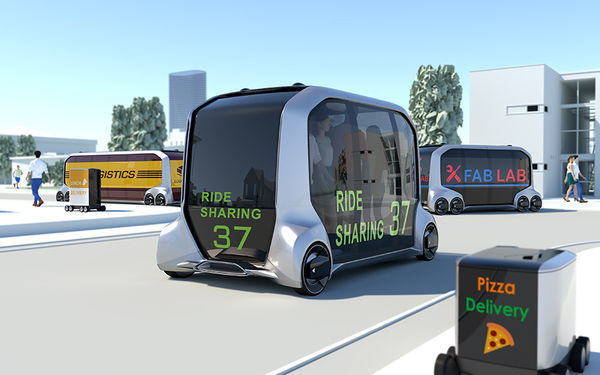
Toyota Launches New Mobility Ecosystem and Concept Vehicle at 2018 CES
"Toyota Motor Corporation President Akio Toyoda today announced a new mobility service business alliance and e-Palette Concept Vehicle designed to meet the demands of future multi-mode transportation and business applications. "The automobile industry is clearly amidst its most dramatic period of change as technologies like electrification, connected and automated driving are making significant progress. Toyota remains committed to making ever better cars. Just as important, we are developing mobility solutions to help everyone enjoy their lives, and we are doing our part to create an ever-better society for the next 100 years and beyond. This announcement marks a major step forward in our evolution towards sustainable mobility, demonstrating our continued expansion beyond traditional cars and trucks to the creation of new values including services for customers", said Akio Toyoda. Unveiled at CES®, the new e-Palette Alliance will leverage Toyota's proprietary Mobility Services Platform (MSPF) to develop a suite of connected mobility solutions and a flexible, purpose-built vehicle." [...]

Baidu debuts Apollo 2.0, its latest open self-driving platform
"China’s Baidu revealed a major update to its Apollo autonomous driving platform at CES 2018 today, including support for new computing platforms, new reference vehicles, more HD mapping services available on a global scale and other updates. Most notably, the update will give everyone using Apollo the ability to drive autonomously on simple, relatively easy to navigate city roads. Baidu revealed a number of new partners at the conference, and announced that Apollo will offer full support for four primary computing platforms this year, including Nvidia, Intel, NXP and Renesas. That’s basically all the major silicon providers working in autonomous driving compute hardware. The update also will see a new, cheaper sensor solution introduced that can support Apollo and potentially broaden its appeal to a new category of customer that might have felt the previous supported sensor suite was out of range, budget-wise. It’s also broadening its appeal in terms of reference designs, with new support for minibuses, SUVs and trucks, so a wider range of vehicle makers can make use of its tech." [...]
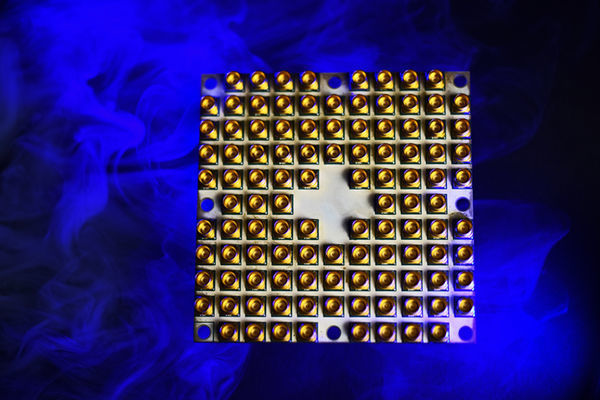
2018 CES: Intel Advances Quantum and Neuromorphic Computing Research
"Today at the 2018 Consumer Electronics Show in Las Vegas, Intel announced two major milestones in its efforts to research and develop future computing technologies including quantum and neuromorphic computing, which have the potential to help industries, research institutions and society solve problems that currently overwhelm today’s classical computers. During his keynote address, Intel CEO Brian Krzanich announced the successful design, fabrication and delivery of a 49-qubit superconducting quantum test chip. The keynote also noted the promise of neuromorphic computing. The digitization of nearly everything is creating an explosion of both structured and unstructured data as well as the desire to collect, analyze and act on it. This is driving exponential demand for compute performance and spurring Intel’s research into these new, specialized architectures. Scaling the Quantum Computing System Today, just two months after delivery of a 17-qubit superconducting test chip, Intel unveiled “Tangle Lake,” a 49-qubit superconducting quantum test chip." [...]
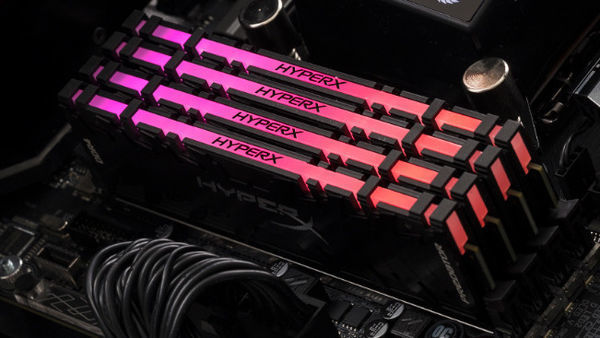
CES 2018: HyperX Unveils World’s First Infrared Synchronized DDR4 RGB Memory
"Innovative HyperX Predator DDR4 RGB Memory Leverages IR Technology to Synchronize RGB Lighting Across Multiple Modules for Enhanced Display Experience LAS VEGAS (CES) – Jan. 8, 2018 – HyperX®, the gaming division of Kingston® Technology Company, Inc., today announced the industry’s first memory modules featuring synchronized RGB lighting with IR (infrared) technology – the HyperX® Predator DDR4 RGB. HyperX has designed IR communication channels onto each memory module, allowing multiple modules to sync LED lighting and produce an exceptional color and pattern display. Powered directly from the motherboard, this patent-pending technology provides an enhanced visual experience of RGB memory for gaming, overclocking PCs and DIY system builds. [Insert video link here] “As a leader in performance and overclocked memory for 15 years, HyperX is excited to bring this unique RGB memory innovation to CES 2018 and the market,” said Kristy Ernt, business manager, HyperX. “Synchronizing HyperX Predator DDR4 RGB memory using IR technology creates a new way to experience RGB lighting on a PC and enables gamers and overclockers to further personalize their gaming experience.” In addition to IR synchronized RGB lighting control, the Predator DDR4 RGB modules also support multiple lighting profiles when plugged into motherboards with compatible RGB control software. HyperX is working with motherboard partners to test and qualify the HyperX Predator DDR4 RGB memory with their control software, including ASUS Aura Sync, Gigabyte RGB Fusion and MSI Mystic Light Sync." [...]

Musician Who Lost His Arm Plays Piano Again with AI Prosthesis
"A Star Wars-inspired limb provides control of each finger. A galaxy far, far away is a little closer with the invention of a robotic arm inspired by Luke Skywalker’s bionic hand. And while this arm may not wield a lightsaber, it has a greater power for jazz musician Jason Barnes — it lets him play the piano for the first time in five years. Barnes, who lost much of his right arm in a work accident, is back at the keys with an AI prosthesis created by researchers at the Georgia Institute of Technology. Unlike most prosthetics, it gives the 28-year-old the ability to control each finger individually. With it, Barnes can play Beethoven." [...]
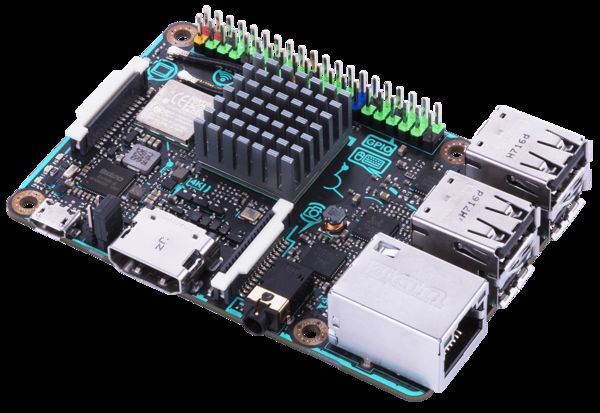
tinker board S
"The new and improved Tinker Board S is a single board computer (SBC) that offers greater durability, better stability and an overall improved user experience for DIY enthusiasts and makers everywhere. More Durable - Onboard 16GB eMMC storage to enhance performance and stability, plus a microSD slot for greater flexibility - Low-voltage input detection to avoid power issue and ensure system stability if using a non-qualified* power supply Better User Experience - HDMI-CEC-ready for complete video entertainment, allowing users to command both Tinker Board S and a TV with a single remote control - Audio jack plug-in detection and auto-switch to 3.5mm audio jack from other interfaces Always Moving Forward with Makers - Onboard power-on pin for makers giving more freedom when bringing their ideas to life. - Enhanced I2S pin with Slave mode and an improved software API for better compatibility" [...]

Qualcomm Introduces Breakthrough Low Power Bluetooth Audio SoC Series for Wireless Earbuds and Hearables
"New Low Power, Feature-rich Bluetooth® Solution Includes Support for Voice Assistant Services, Qualcomm TrueWireless Stereo, Qualcomm aptX HD audio and Integrated Hybrid ANC At CES® 2018, Qualcomm Incorporated (NASDAQ: QCOM) today announced that its subsidiary, Qualcomm Technologies International, Ltd., introduced the new Qualcomm® Low Power Bluetooth SoC QCC5100 series that is designed to help manufacturers develop a new generation of compact, feature-rich, wireless earbuds, hearables and headsets. To help meet consumer demand for superior audio quality as well as extended battery life and playback time in wireless audio devices, the breakthrough SoC series is engineered to reduce power consumption by up to 65 percent for both voice calls and music streaming, compared to previous single-chip Bluetooth audio solutions. The SoC architecture supports low power performance and includes a Bluetooth 5 dual-mode radio, low power audio and application subsystems. Designed to serve various “on-the-go” consumer use cases requiring robust, high quality, truly wireless listening experiences, the platform supports advanced features including Qualcomm® TrueWireless™ Stereo, Qualcomm® aptX™ HD audio, Integrated Hybrid Active Noise Cancellation (ANC) and third-party voice assistant services. “This breakthrough single-chip solution is designed to dramatically reduce power consumption and offers enhanced processing capabilities to help our customers build new life-enhancing, feature-rich devices. This will open new possibilities for extended-use hearable applications including virtual assistants, augmented hearing and enhanced listening,” said Anthony Murray, senior vice president and general manager, voice & music, Qualcomm Technologies International, Ltd. “Without sacrificing our superior sound quality, we can now help to pack tremendous functionality into small, wireless hearable devices." [...]
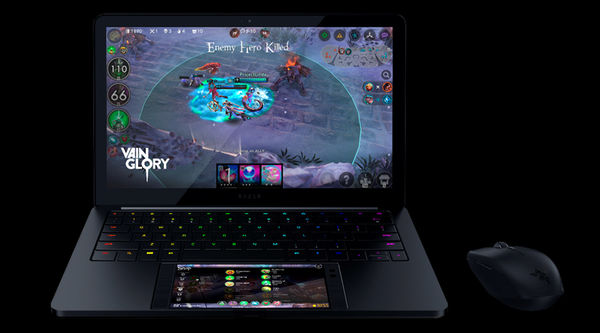
Razer Unveils Project Linda: Android Laptop/Phone Hybrid Concept
"Razer™, the leading lifestyle brand for gamers, today revealed “Project Linda,” a 13.3-inch laptop design powered by the Android-based Razer Phone. The smartphone and laptop hybrid concept harkens a new era for mobile personal computing, blending the familiar Android environment with the ease-of-use of a laptop. As one of the few companies in the world to straddle user interfaces, laptops and smartphones, Project Linda is a groundbreaking concept that blurs the lines between the smartphone and the laptop. Razer’s Project Linda laptop seamlessly docks the Razer Phone inside its chassis where a touchpad would normally reside, and connects with the press of a button. The phone’s Qualcomm® Snapdragon™ 835 mobile platform and 8 GB of RAM deliver responsive performance, instantly transforming Project Linda into an Android laptop. The Razer Phone 5.7-inch display can be used as a touchpad, or as a second screen for access to apps, tools, and more." [...]
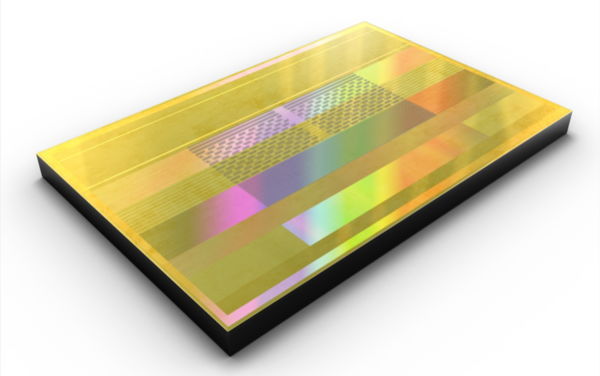
Samsung Starts Producing 8-Gigabyte High Bandwidth Memory-2 with Highest Data Transmission Speed
"The new HBM2, Aquabolt™, features today’s highest DRAM performance levels, for use in next-generation supercomputers, AI solutions and graphics systems Samsung Electronics, the world leader in advanced memory technology, today announced that it has started mass production of its 2nd-generation 8-gigabyte (GB) High Bandwidth Memory-2 (HBM2) with the fastest data transmission speed on the market today. The new solution, Aquabolt™, which is the industry’s first HBM2 to deliver a 2.4 gigabits-per-second (Gbps) data transfer speed per pin, should accelerate the expansion of supercomputing and the graphics card market. “With our production of the first 2.4Gbps 8GB HBM2, we are further strengthening our technology leadership and market competitiveness,” said Jaesoo Han, executive vice president, Memory Sales & Marketing team at Samsung Electronics. “We will continue to reinforce our command of the DRAM market by assuring a stable supply of HBM2 worldwide, in accordance with the timing of anticipated next-generation system launches by our customers.” Samsung’s new 8GB HBM2 delivers the highest level of DRAM performance, featuring a 2.4Gbps pin speed at 1.2V, which translates into a performance upgrade of nearly 50 percent per each package, compared to the company’s 1st-generation 8GB HBM2 package with its 1.6Gbps pin speed at 1.2V and 2.0Gbps at 1.35V. With these improvements, a single Samsung 8GB HBM2 package will offer a 307 gigabytes-per-second (GBps) data bandwidth, achieving 9.6 times faster data transmission than an 8 gigabit (Gb) GDDR5 chip, which provides a 32GBps data bandwidth. * Using four of the new HBM2 packages in a system will enable a 1.2 terabytes-per-second (TBps) bandwidth., which will improve overall system performance by as much as 50 percent, compared to a system that uses a 1.6Gbps HBM2." [...]

Here's the story behind the pole-dancing robots everyone's talking about at CES
"Giles Walker made dancing robots as art. Now he’s been roped into the sex industry. “I’m here to see the robot strippers?” That was me, Monday night, walking into a Las Vegas strip club in hopes of finding one of the more bizarre forms of entertainment near the Strip: A pair of pole-dancing robots I’d read about in an International Business Times article earlier that day. The robots were an obvious gimmick during one of Las Vegas’s busiest weeks of the year — the 50th Consumer Electronics Show, a massive annual tech trade show full of geeky gadgets and gizmos, from touchscreens to cars to fancy electric trashcans. The Sapphire Gentleman’s Club, a strip club right off Vegas’ main drag, paid to showcase the robots as a way to drum up interest from press and customers. As a first-time CES attendee, the gimmick worked on me: What could be more CES than pole-dancing robots?" [...]
Ciência e Tecnologia

Quantum 'spooky action at a distance' becoming practical
"A team from Griffith's Centre for Quantum Dynamics in Australia have demonstrated how to rigorously test if pairs of photons - particles of light - display Einstein's "spooky action at a distance", even under adverse conditions that mimic those outside the lab. They demonstrated that the effect, also known as quantum nonlocality, can still be verified even when many of the photons are lost by absorption or scattering as they travel from source to destination through an optical fiber channel. The experimental study and techniques are published in the journal Science Advances. Quantum nonlocality is important in the development of new global quantum information networks, which will have transmission security guaranteed by the laws of physics. These are the networks where powerful quantum computers can be linked. Photons can be used to form a quantum link between two locations by making a pair of photons that are "entangled" - so that measuring one determines the properties of its twin - and then sending one along a communication channel." [...]
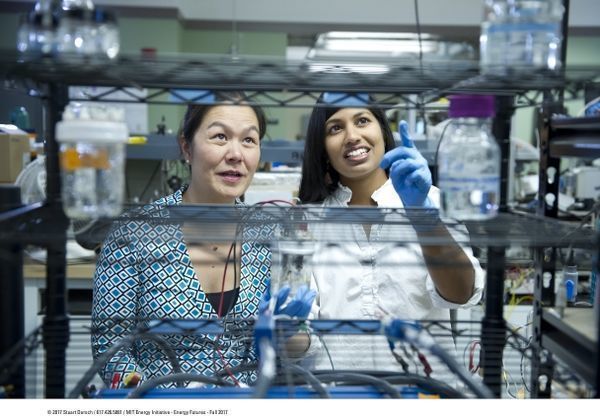
Optimizing carbon nanotube electrodes
"New model measures characteristics of carbon nanotube structures for energy storage and water desalination applications. Using electrodes made of carbon nanotubes (CNTs) can significantly improve the performance of devices ranging from capacitors and batteries to water desalination systems. But figuring out the physical characteristics of vertically aligned CNT arrays that yield the most benefit has been difficult. Now an MIT team has developed a method that can help. By combining simple benchtop experiments with a model describing porous materials, the researchers have found they can quantify the morphology of a CNT sample, without destroying it in the process. In a series of tests, the researchers confirmed that their adapted model can reproduce key measurements taken on CNT samples under varying conditions." [...]

The research hardware in your video-game system
"Motion sensors don’t just drive gameplay. With the right software, they can scan dinosaur skulls, monitor glaciers and help robots to see. A man with a black rectangular bar strapped to his chest walks a careful circuit around the skull of a Tyrannosaurus rex. It’s not performance art. The black rectangle is a motion sensor called Kinect, and its wearer is using it at the Field Museum in Chicago, Illinois, in to digitally capture the precise 3D shape of the dinosaur’s skull. That’s a far cry from its developer’s intended application." [...]
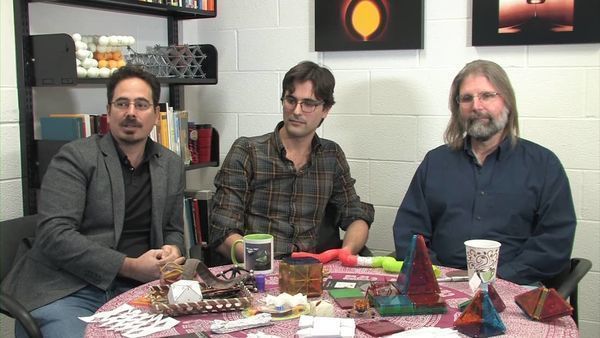
Physicists take first step toward cell-sized robots
"An electricity-conducting, environment-sensing, shape-changing machine the size of a human cell? Is that even possible? Cornell physicists Paul McEuen and Itai Cohen not only say yes, but they’ve actually built the “muscle” for one. With postdoctoral researcher Marc Miskin at the helm, the team has made a robot exoskeleton that can rapidly change its shape upon sensing chemical or thermal changes in its environment. And, they claim, these microscale machines – equipped with electronic, photonic and chemical payloads – could become a powerful platform for robotics at the size scale of biological microorganisms. “You could put the computational power of the spaceship Voyager onto an object the size of a cell,” Cohen said." [...]
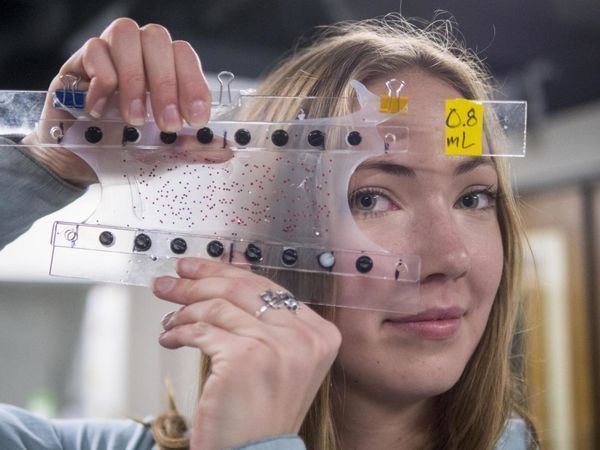
Next-gen flexible robots move and heal like us
"In the basement of the Engineering Center at CU Boulder, a group of researchers is working to create the next generation of robots. But instead of the metallic droids you may be imagining, these robots are made from soft materials that react to applied voltage with a wide range of motions. Such soft robots contain tremendous potential for future applications as they adapt to dynamic environments and are well-suited to closely interact with humans. The soft devices can perform a variety of tasks, including grasping delicate objects, such as a raspberry and a raw egg, as well as lifting heavy objects. A central challenge in the field known as “soft robotics” is a lack of actuators or “artificial muscles” that can replicate the versatility and performance of the real thing. The Keplinger Research Group in the College of Engineering and Applied Science has developed a new class of soft, electrically activated devices capable of mimicking the expansion and contraction of natural muscles." [...]
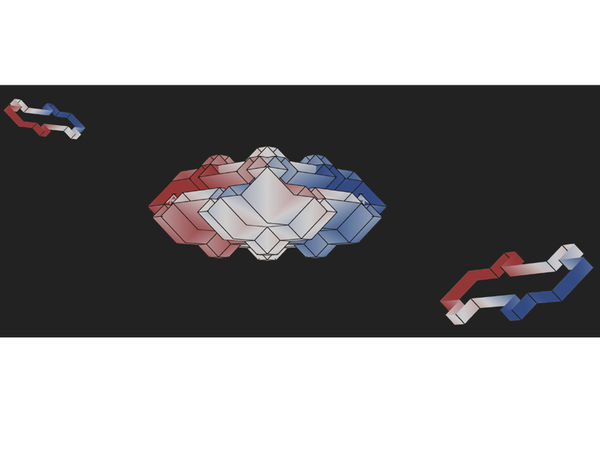
Leaving Flatland - Quantum Hall Physics in 4D
"Researchers from LMU/MPQ implement a dynamical version of the 4D quantum Hall effect with ultracold atoms in an optical superlattice potential In literature, the potential existence of extra dimensions was discussed in Edwin Abbott’s satirical novel “Flatland: A Romance of Many Dimensions” (1884), portraying the Victorian society in 19th century England as a hierarchical two-dimensional world, incapable of realizing its narrow-mindedness due to its lower-dimensional nature. In physics, on the other hand, the possibility that our universe comprises more than three spatial dimensions was first proposed in the wake of Albert Einstein’s theory of general relativity in the 1920s. Modern string theory – trying to reconcile Einstein’s ideas with the laws of quantum mechanics – even postulates up to 10 dimensions. In a completely different context, an international team of researchers led by Professor Immanuel Bloch (LMU/MPQ) and Professor Oded Zilberberg (ETH Zürich) has now demonstrated a way to observe physical phenomena proposed to exist in higher-dimensional systems in analogous real-world experiments. Using ultracold atoms trapped in a periodically modulated two-dimensional superlattice potential, the scientists could observe a dynamical version of a novel type of quantum Hall effect that is predicted to occur in four-dimensional systems. (Nature, 4 January 2018) The Hall effect occurs when charged particles move in a two-dimensional plane in the presence of a magnetic field." [...]

The Making of Biorelevant Nanomaterials
"A combined strategy of polymerization and electrostatic self-assembly to synthesize low-dimensional polyion complex nanomaterials with various morphologies The interactions of biological macromolecules such as nucleic acids, proteins, and polysaccharide–protein conjugates can be mimicked by artificial polyelectrolytes. Such synthetic polyionic complexes are expected to serve as novel platforms to stabilize and deliver drugs, proteins, or nucleic acids. In the journal Angewandte Chemie, Chinese investigators have introduced a versatile, commercially applicable preparation strategy of such nanomaterials with tunable morphology. The preparation of libraries of these low-dimensional biorelevant nanostructures can be envisaged. The interactions of biological macromolecules such as nucleic acids, proteins, and polysaccharide–protein conjugates can be mimicked by artificial polyelectrolytes. Such synthetic polyionic complexes are expected to serve as novel platforms to stabilize and deliver drugs, proteins, or nucleic acids." [...]
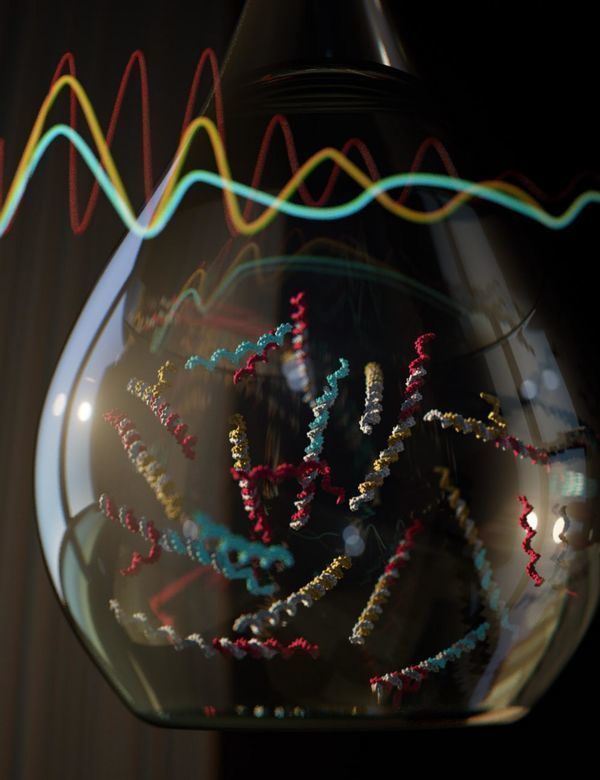
First-of-its-Kind Chemical Oscillator Offers New Level of Molecular Control
"DNA molecules that follow specific instructions could offer more precise molecular control of synthetic chemical systems, a discovery that opens the door for engineers to create molecular machines with new and complex behaviors. Researchers have created chemical amplifiers and a chemical oscillator using a systematic method that has the potential to embed sophisticated circuit computation within molecular systems designed for applications in health care, advanced materials and nanotechnology. The findings are published in the Dec. 15 issue of the journal Science. Chemical oscillators have long been studied by engineers and scientists. The researchers who discovered the chemical oscillator that controls the human circadian rhythm —responsible for our bodies’ day and night rhythm — earned the 2017 Nobel Prize in physiology or medicine. Though understanding of chemical oscillators and other biological chemical processes has evolved significantly, scientists do not know enough to control the chemical activities of living cells." [...]
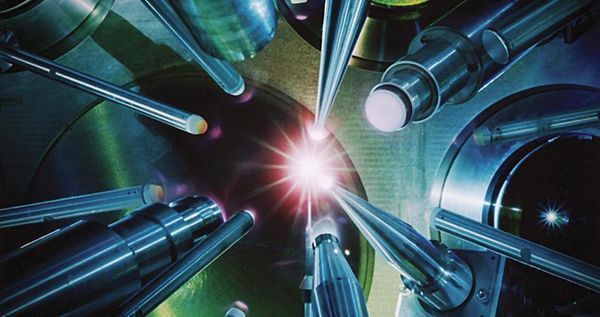
Computational astrophysics team uncloaks magnetic fields of cosmic events
"The development of ultra-intense lasers delivering the same power as the entire U.S. power grid has enabled the study of cosmic phenomena such as supernovae and black holes in earthbound laboratories. Now, a new method developed by computational astrophysicists at the University of Chicago allows scientists to analyze a key characteristic of these events: their powerful and complex magnetic fields. In the field of high-energy density physics, or HEDP, scientists study a wide range of astrophysical objects—stars, supermassive black holes at the center of galaxies and galaxy clusters—with laboratory experiments as small as a penny and lasting only a few billionths of a second. By focusing powerful lasers on a carefully designed target, researchers can produce plasmas that reproduce conditions observed by astronomers in our sun and distant galaxies. Planning these complex and expensive experiments requires large-scale, high-fidelity computer simulation beforehand. Since 2012, the Flash Center for Computational Science of the Department of Astronomy & Astrophysics at UChicago has provided the leading open computer code, called FLASH, for these HEDP simulations, enabling researchers to fine-tune experiments and develop analysis methods before execution at sites such as the National Ignition Facility at Lawrence Livermore National Laboratory or the OMEGA Laser Facility in Rochester, N.Y. “As soon as FLASH became available, there was kind of a stampede to use it to design experiments,” said Petros Tzeferacos, research assistant professor of astronomy and astrophysics and associate director of the Flash Center." [...]
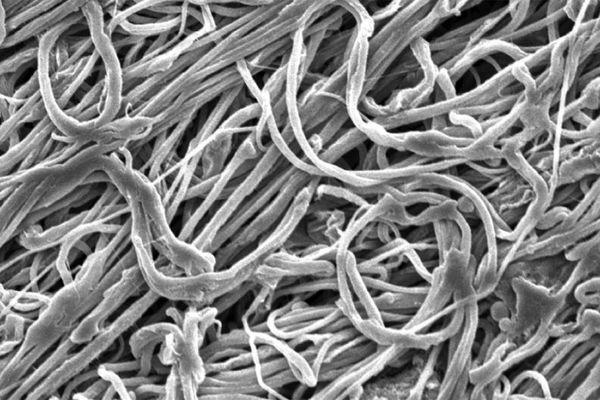
Ultrafine fibers have exceptional strength
"New technique developed at MIT could produce strong, resilient nanofibers for many applications. Researchers at MIT have developed a process that can produce ultrafine fibers — whose diameter is measured in nanometers, or billionths of a meter — that are exceptionally strong and tough. These fibers, which should be inexpensive and easy to produce, could be choice materials for many applications, such as protective armor and nanocomposites. The new process, called gel electrospinning, is described in a paper by MIT professor of chemical engineering Gregory Rutledge and postdoc Jay Park. The paper appears online and will be published in the February edition of the Journal of Materials Science. In materials science, Rutledge explains, “there are a lot of tradeoffs.” Typically researchers can enhance one characteristic of a material but will see a decline in a different characteristic." [...]
A simplified formulation of lattice gauge theories for applications in particle physics as well as quantum simulations
"Theorists from the field of quantum optics and particle physics find a new and very general approach for the solution of lattice gauge theories. It is not the daily occurrence that physicists from entirely different fields closely work together. However, in theoretical physics a general ansatz can offer solutions for a large variety of problems. A team of scientists from the Theory Division of Professor Ignacio Cirac at the Max Planck Institute of Quantum Optics has now for a couple of years collaborated with theorists from the field of particle physics, in order to find a new and simplified formulation of lattice gauge theories. (Physical Review X 7, 28 November 2017) Gauge theories play a central role in many areas of physics. They are, for instance, the foundation of the theoretical description of the standard model of particle physics that has been developed in the 1970ies." [...]
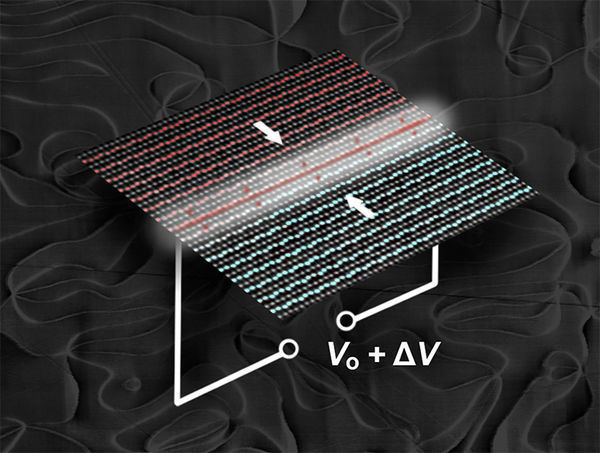
Rewritable Wires Could Mean No More Obsolete Circuitry
"An electric field switches the conductivity on and off in atomic-scale channels, which could allow for upgrades at will. Updating, rather than replacing, outdated circuits in tiny sensors would reduce cost and waste. The unusual electronic properties of ferroelectric domain walls could be the answer. A domain wall is the interface between different types of electrical ordering. Applying a voltage to the domain wall can change the preferred electrical ordering, making the domain walls move. These walls can be made, moved, and erased on demand, making them promising for next-generation circuit elements." [...]
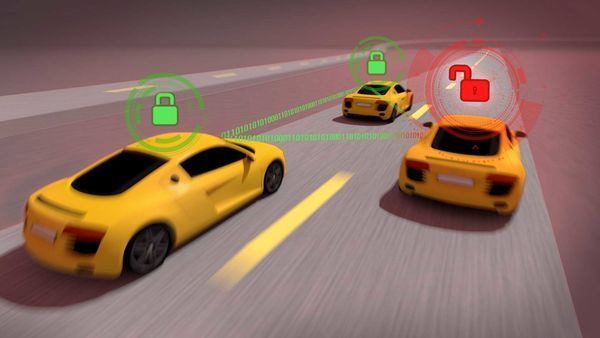
Cybersecurity in self-driving cars: U-M releases threat identification tool
"Instead of taking you home from work, your self-driving car delivers you to a desolate road, where it pulls off on the shoulder and stops. You call your vehicle to pick you up from a store and instead you get a text message: Send $100 worth of Bitcoin to this account and it'll be right over. You buckle your seatbelt and set your destination to a doctor's appointment, but your car won't leave your driveway. It senses it's been hacked and your home is its pre-programmed safe destination. These three hypothetical scenarios—posited in a new white paper by University of Michigan researchers working with Mcity—illustrate the breadth of the cybersecurity challenges that must be overcome before autonomous and connected vehicles can be widely adopted. While every new generation of auto tech brings new security risks, the vulnerabilities that come along with advanced mobility are both unprecedented and under-studied, the paper states." [...]
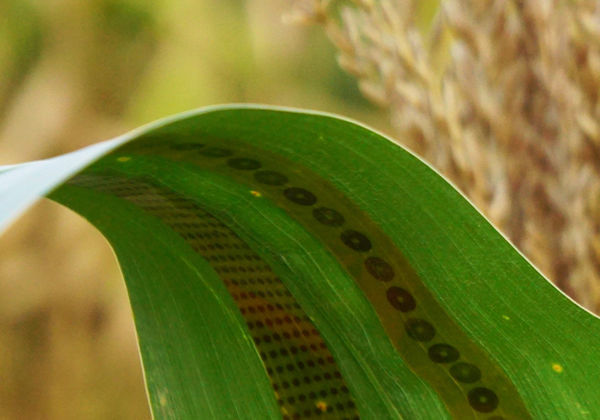
Engineers make wearable sensors for plants, enabling measurements of water use in crops
"Iowa State University plant scientist Patrick Schnable quickly described how he measured the time it takes for two kinds of corn plants to move water from their roots, to their lower leaves and then to their upper leaves. This was no technical, precise, poster talk. This was a researcher interested in working with new, low-cost, easily produced, graphene-based, sensors-on-tape that can be attached to plants and can provide new kinds of data to researchers and farmers. “With a tool like this, we can begin to breed plants that are more efficient in using water,” he said. “That’s exciting. We couldn’t do this before." [...]

Machine Learning Provides a Bridge to the Texture of the Quantum World
"Machine learning and neural networks are the foundation of artificial intelligence and image recognition, but now they offer a bridge to see and recognize exotic insulating phases in quantum materials. Does it conduct electricity? Or insulate against electricity? Physicists commonly classify material phases as one or the other. Machine learning is a powerful tool for pattern recognition and thus could help identify phases of matter. However, machine learning needs a bridge to the quantum world, where the physics of atoms, electrons, and particles differs from that of larger objects or galaxies." [...]
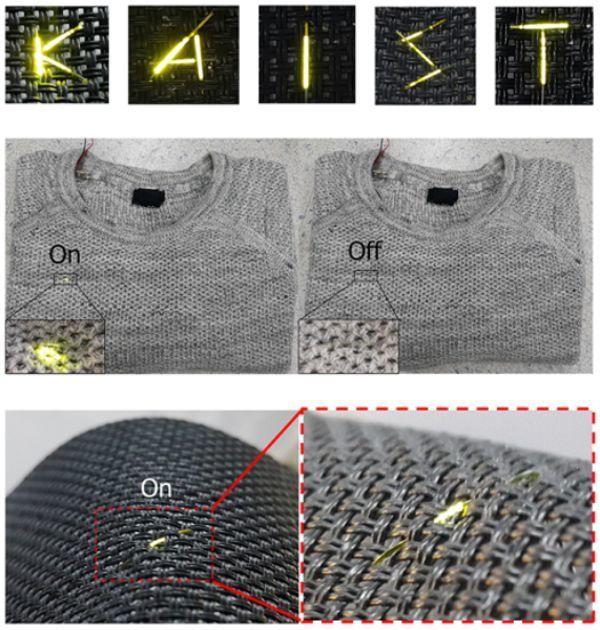
Fiber OLEDs, Thinner Than a Hair
"Professor Kyung Cheol Choi from the School of Electrical Engineering and his team succeeded in fabricating highly efficient Organic Light-Emitting Diodes (OLEDs) on an ultra-thin fiber. The team expects the technology, which produces high-efficiency, long-lasting OLEDs, can be widely utilized in wearable displays. Existing fiber-based wearable displays’ OLEDs show much lower performance compared to those fabricated on planar substrates. This low performance caused a limitation for applying it to actual wearable displays. In order to solve this problem, the team designed a structure of OLEDs compatible to fiber and used a dip-coating method in a three-dimensional structure of fibers. Through this method, the team successfully developed efficient OLEDs that are designed to last a lifetime and are still equivalent to those on planar substrates." [...]

Researchers Develop World's Smallest Wearable Device
"A Northwestern Engineering professor, working in conjunction with the global beauty company L’Oréal, has developed the smallest wearable device in the world. The wafer-thin, feather-light sensor can fit on a fingernail and precisely measures a person’s exposure to UV light from the sun. The device, as light as a raindrop and smaller in circumference than an M&M, is powered by the sun and contains the world’s most sophisticated and accurate UV dosimeter. It was unveiled Sunday, Jan. 7, at the 2018 Consumer Electronics Show in Las Vegas and will be called UV Sense. “We think it provides the most convenient, most accurate way for people to measure sun exposure in a quantitative manner,” said John A. Rogers, the Louis Simpson and Kimberly Querrey Professor of Materials Science and Engineering, Biomedical Engineering, and Neurological Surgery in Northwestern's McCormick School of Engineering. “The broader goal is to provide a technology platform that can save lives and reduce skin cancers by allowing individuals, on a personalized level, to modulate their exposure to the sun.” UV Sense has no moving parts, no battery, is waterproof and can be attached to almost any part of the body or clothing, where it continuously measures UV exposure in a unique accumulation mode." [...]

Manchester scientists develop graphene sensors that could revolutionise the Internet of Things
"Researchers at The University of Manchester have devised graphene sensors embedded into RFIDs, which have the potential to revolutionise the Internet of Things (IoT). By layering graphene-oxide (a derivative of graphene) over graphene to create a flexible heterostructure the team have developed humidity sensors for remote sensing with the ability to connect to any wireless network. Graphene was the world’s first two-dimensional material isolated in 2004 at The University of Manchester, it is stronger than steel, lightweight, flexible and more conductive than copper. Since then a whole family of other 2D materials have been discovered and continues to grow. Using graphene and other 2D materials, scientists can layer these materials, similar to stacking bricks of Lego in a precisely chosen sequence known as van der Waals heterostructures to create high-performance structures tailored to a specific purpose. As reported in Scientific Reports, the groundbreaking nature of this development is that such sensors can be printed layer-by-layer for scalable and mass production at very low cost." [...]
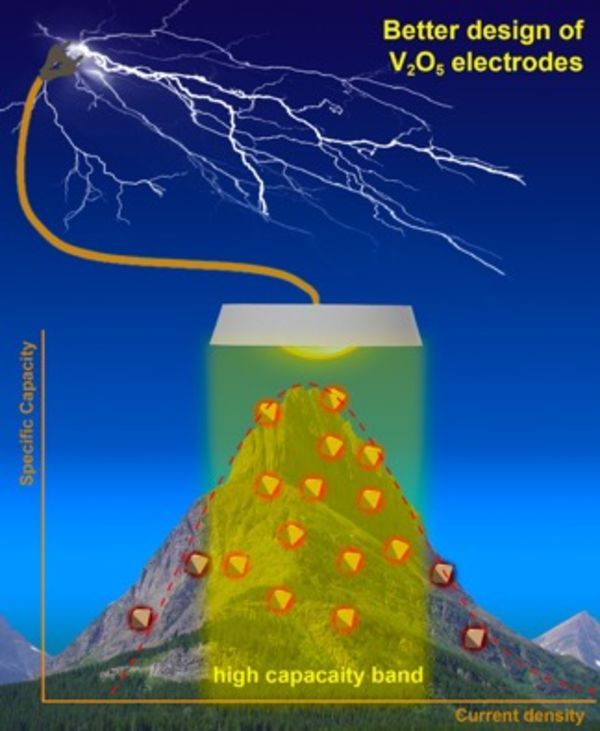
Evaluating electrodes: Researchers identify concepts to measure battery performance
"How do we know if a new battery is good? Batteries that perform well are invaluable to a number of resources that we use daily, such as cell phones and laptops, but also those that we are utilizing more frequently than ever before, such as drones and electric vehicles. Researchers in the Texas A&M University College of Engineering have identified two factors that can be used to measure the performance of batteries. Yuan Yue, lead author of the published manuscript and a graduate student in the Department of Materials Science and Engineering, and Dr. Hong Liang, the Oscar S. Wyatt Jr. Professor in the Department of Mechanical Engineering and affiliated faculty member in materials science and engineering, collected and analyzed experimental data from over 250 scholarly articles published in the last decade. The duo began analyzing the structures and performance of the V2O5 electrode to derive key characteristics that could be used to optimize batteries." [...]
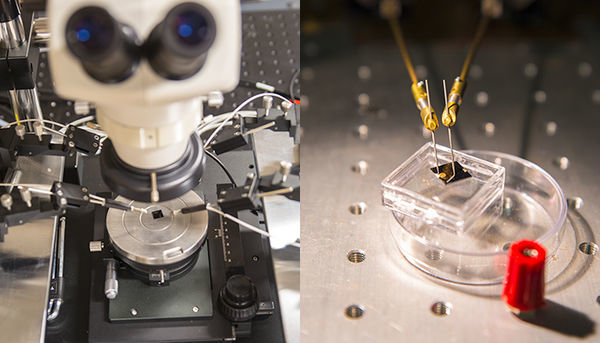
Making the Internet of Things possible with a new breed of “memristors”
"The internet of things is coming, that much we know. But still it won’t; not until we have components and chips that can handle the explosion of data that comes with IoT. In 2020, there will already be 50 billion industrial internet sensors in place all around us. A single autonomous device – a smart watch, a cleaning robot, or a driverless car – can produce gigabytes of data each day, whereas an airbus may have over 10 000 sensors in one wing alone. Two hurdles need to be overcome. First, current transistors in computer chips must be miniaturized to the size of only few nanometres; the problem is they won’t work anymore then." [...]
Documentação
A documentação é parte essencial do processo de aprendizagem e a Internet além de artigos interessantes de explorar também tem alguma documentação em formato PDF interessante de ler. Todos os links aqui apresentados são para conteúdo disponibilizado livremente pelo editor do livro.

newelectronics de 9 Janeiro 2018
"New Electronics is a fortnightly magazine focusing on technological innovation, news and the latest developments in the electronics sector. Downloadable as a digital page turner or pdf file, or offered as a hard copy, the New Electronics magazine is available in a format to suit you. " [...]
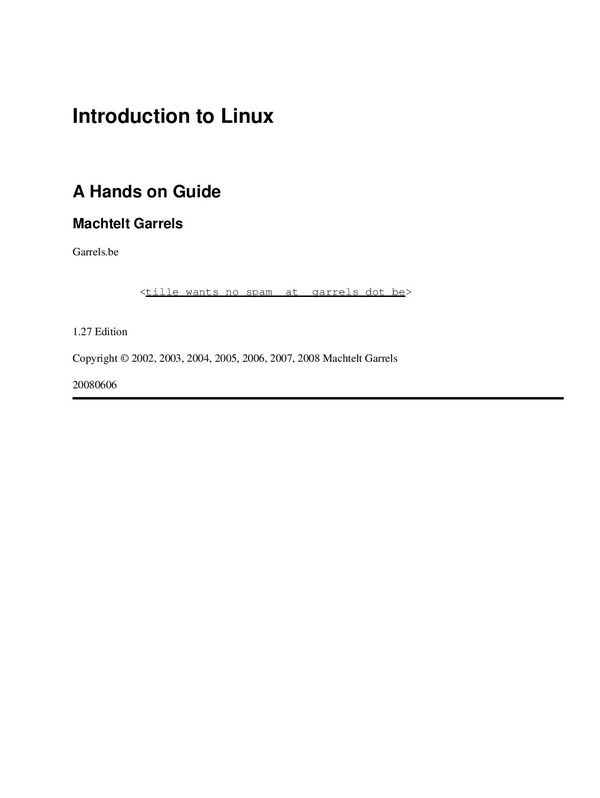
Introduction to Linux - A Hands on Guide
"Many people still believe that learning Linux is difficult, or that only experts can understand how a Linux system works. Though there is a lot of free documentation available, the documentation is widely scattered on the Web, and often confusing, since it is usually oriented toward experienced UNIX or Linux users. Today, thanks to the advancements in development, Linux has grown in popularity both at home and at work. The goal of this guide is to show people of all ages that Linux can be simple and fun, and used for all kinds of purposes. " [...]
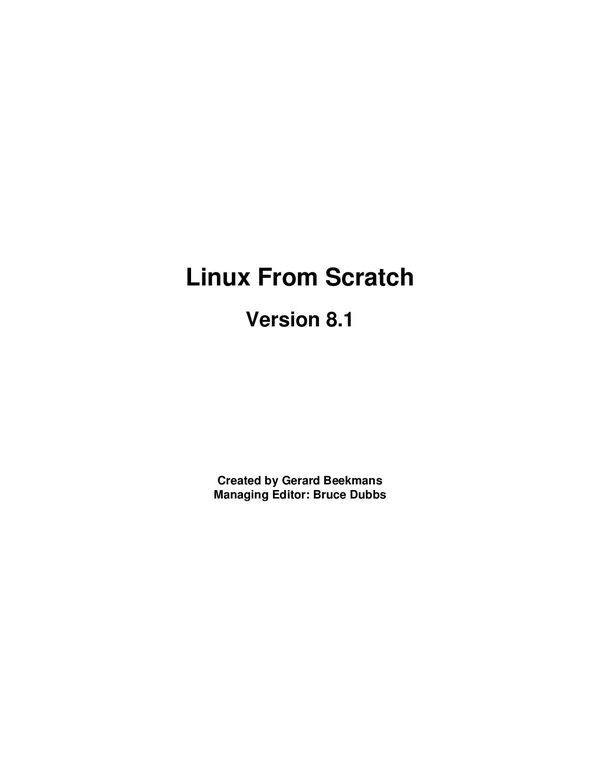
Linux From Scratch Version 8.1
"My journey to learn and better understand Linux began over a decade ago, back in 1998. I had just installed my first Linux distribution and had quickly become intrigued with the whole concept and philosophy behind Linux. There are always many ways to accomplish a single task. The same can be said about Linux distributions. A great many have existed over the years. Some still exist, some have morphed into something else, yet others have been relegated to our memories." [...]
Projetos Maker
Diversos Projetos interessantes.

Simplifying VHDL Code: The Std_Logic_Vector Data Type
"This article will review the "std_logic_vector" data type which is one of the most common data types in VHDL. In a previous article on the VHDL hardware description language, we discussed the basic structure of VHDL code through several introductory examples. This article will review one of the most common data types in VHDL, i.e., the “std_logic_vector” data type. We will first discuss the fact that vectors allow us to have a more compact and readable VHDL description, especially when dealing with large circuits. Then, after reviewing some important features of the “std_logic_vector” data type, we will go over some coding styles that can help us avoid mistakes when utilizing vectors. " [...]
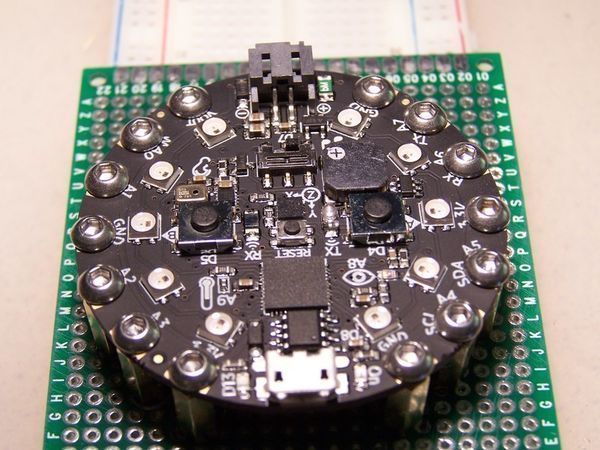
DIY Circuit Playground Shields
"The CircuitPlayground and CircuitPlayground Express are great boards for learning with. This is largely due to the abundance of sensors and actuators built into the design. While there is a pile of builtin hardware, it doesn't include everything. Fortunately it does have several useful connections run out to the alligator clip pads around the edge of the board. That means you can connect to it using alligator clip jumpers, like one of these: This can be great for a quick & dirty test, but isn't very robust. I got to thinking about how I could deal with this and took some inspiration from some Micro:bit products I've seen." [...]
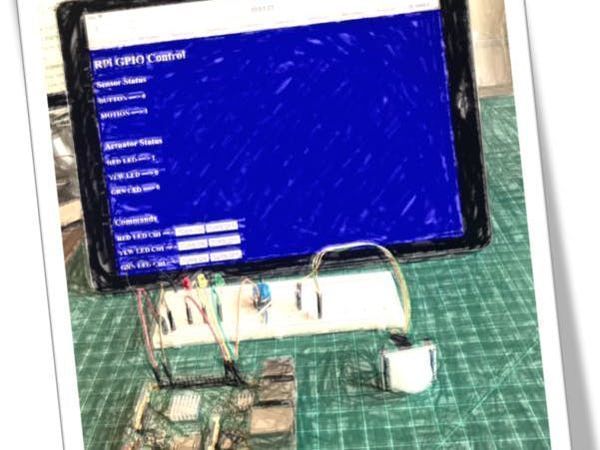
Python WebServer With Flask and Raspberry Pi
"Introduction: Python WebServer With Flask and Raspberry Pi Let's create a simple WebServer to control things in your home. There are a lot of ways to do that. For example, on my tutorial: IoT - Controlling a Raspberry Pi Robot Over Internet With HTML and Shell Scripts Only, we have explored how to control a robot over the local network using the LIGHTTPD WebServer. For this project here, we will use FLASK, a very simple and free microframework for Python. With Flask, will be very simple to control Raspberry GPIOs over the internet. Flask is called a micro framework because it does not require particular tools or libraries." [...]

DIY CNC Router Build (large Format 5x10ft, Rack and Pinion)
"This is a not so little summary of the build of my homemade CNC router, aka The Overpass. This instructable is more of a documentation of how I build my CNC and is not to be mistaken as a tutorial for buidling a CNC. The initial target of my build was to make a large format CNC router which does not compromise on the quality and functionality. This was a little hard to achieve on a tight budget but I managed it nonetheless. As for the inspiration and info for my build, I had a lot of help from the Joes CNC forum. Also I was much inspired from the CNCrouterparts machines and learned whatever I could from their website." [...]
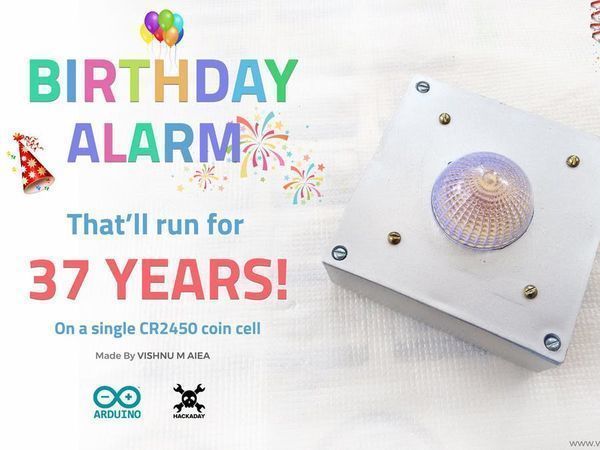
Birthday Alarm That'll Run For 37 Years
"An Arduino powered birthday reminder device that'll wish you happy birthday for 37 years on a single CR2450 (540 mAh) coin cell. Yes, you read the title correct. Have you ever forgot your birthday? Or what if you can gift to someone you love, a device that'll wish them on their birthday for 37 times? I kid you not, this simple Arduino powered birthday alarm that runs on a single CR2450 coin cell can wish your loved ones (or yourself) a happy birthday for 37 years, before the battery run out of juice. Spoiler alert: that 37 years is the result of calculations based on real measurements." [...]
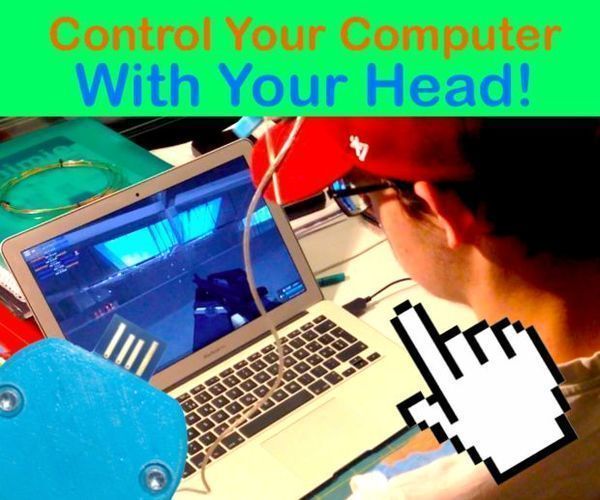
Control Your Computer With Your Head!
"Hi, I created a system that allows you to control your computer's mouse just by moving your head. If you like my project, don't hesitate to vote for me in the Arduino Contest 2017. ;) Why I made this? I wanted to make an object that makes video games more realistic. However, I wanted to be as simple as possible, you don't need to have good knowledge of electronics and soldering to do this project. I created this system to play games easier, this system is very intuitive. The head of the character in your video game makes the same movement as your head in real life." [...]
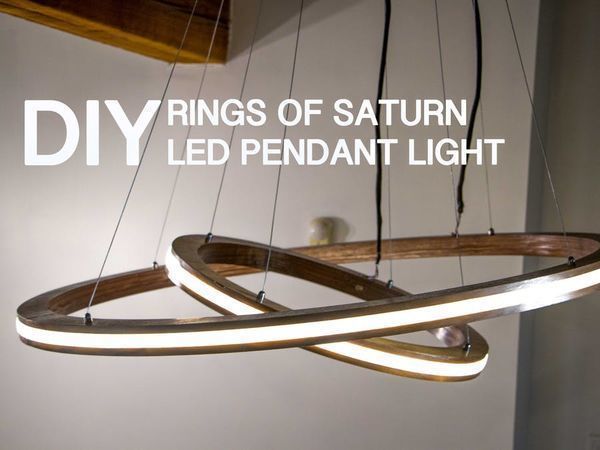
Rings of Saturn LED Music Visualizing Pendant Light
"I made this LED pendant light from plywood, LED strips, and flexible LED channel. It is controlled by an Arduino and syncs to music. I made this LED pendant light from plywood, LED strips, and flexible LED channel. Since I designed this for my living room, the music syncing had to be incognito. With this in mind, I used warm white / cool white / amber LED strips, instead of RGB strips. In solid white mode, the rings give off various shades of white for a sophisticated modern look that hides the wild side when you switch the light to music visualizer mode The build is fairly simple." [...]
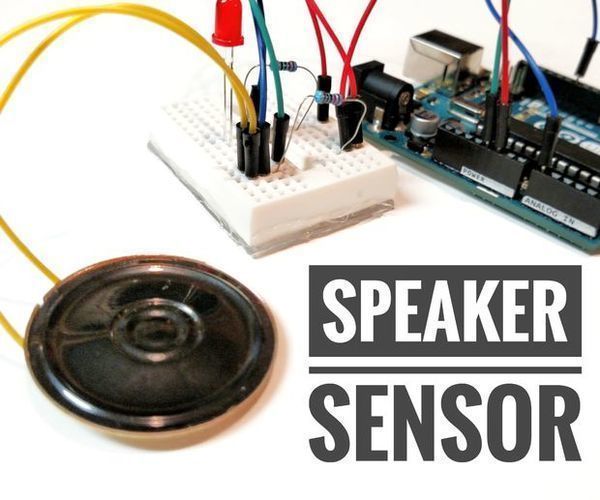
DIY Shock Sensor With a Speaker
"A speaker works by activating an electromagnet which is nearby a "regular" magnet. This produces vibration, resulting in sound. So if instead of supplying current to the speaker, we can produce current (if very little) by moving the speaker itsself. This current can then be detected and interpreted by a microcontroller such as the Arduino. " [...]
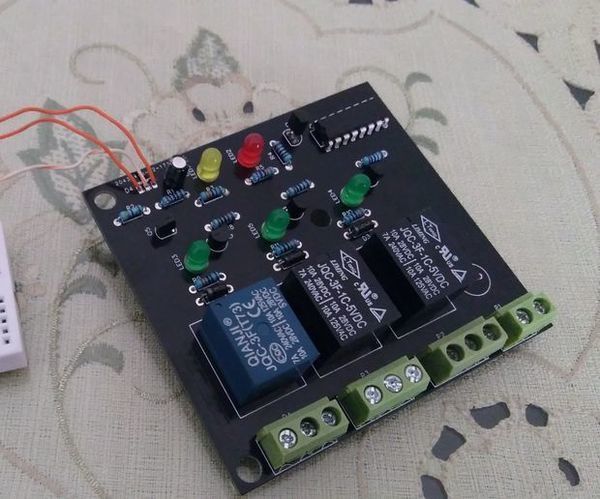
Infrared Control 3 Channels CD4017
"1.Since I was a child, I've always had a great admiration for electronics, I've always been struck by the fact of making things by myself, that's why, today I bring you my first Instructable, I clarify that it is a prototype, It is not functional even one hundred percent, but I will show all the steps that I have carried out, as well as the schematic circuit and the PCB, so that anyone can have fun putting together and modifying this circuit, without more, let's enter in detail about this system. This system consists mainly of an integrated circuit CD4017, well known in the world of electronics, in this case we will use it to make a circuit that can be applied to the domotica, this circuit will allow us, through an infrared TV control activate three different loads, as could be a fan, an air conditioning, in short, there are no limits! .... It is a very easy, simple and fast to build perfect circuit for people who are starting in this world, besides it is done With pure electronics, it does not contain or need programming, without more we are going to give it to you !! " [...]
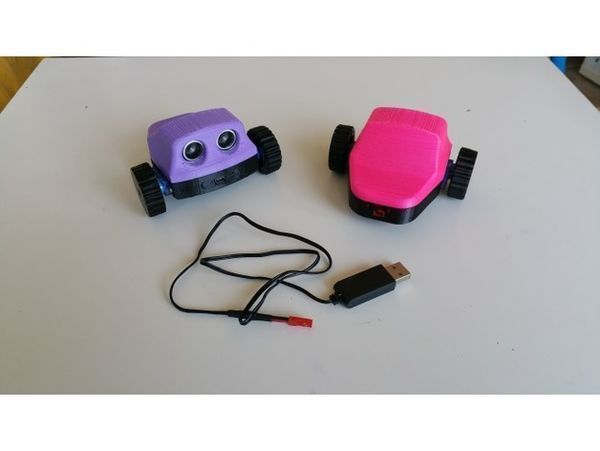
QuickyBot - Small robot based on an arduino Nano board whith bluetooth and ultrasonic sensor
"QuickyBot is a small development platform for learning arduino programming. It is based on a Nano arduino card. It has an ultrasonic distance sensor hc-sr04 to apprehend its environment. It communicates via bluetooth using a HC-06 card. It is powered by a 850 mAh LiPo battery. Its two-wheel drive is powered by two micorservos 9g TowerPro SG90 modified for continuous rotation." [...]
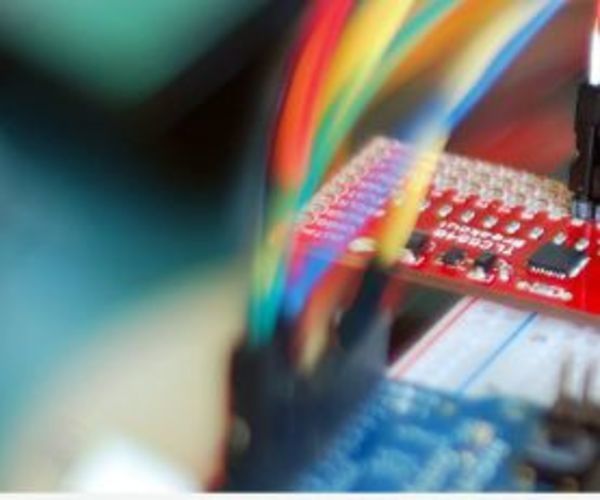
Control a Lot of Servoes With Arduino!
"At first I should tell something. I had not beautiful pictures. So, I have taken the pictures from bildr.blog. We know, an Arduino UNO has not much pwm pins to control many servoes. So, we often fall in a problem to control more servoes by an arduino. Today, I will explain you how can you control a lot of servoes woth arduino." [...]

How to Use L298n to Control Dc Motor With Arduino
"Hello everybody, Welcome to this tutorial, check the video first it contains a little bit of explanation, we are here using a L298n Dual H-bridge driver to control a DC motor using Arduino, you can check more on the internet if you need further information but here we are to make things work so you can adapt it to your projects easily, Hope you like it. " [...]
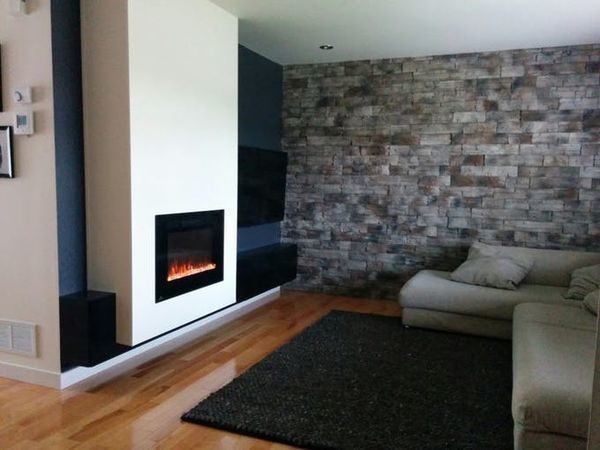
A More Realistic Electric Fireplace
"Add some sound FX to your electric fireplace! Some time ago we added a magical element to our living room: an electric fireplace. The feeling and the ambiance it gives to our home is great, I totally recommend you to get one if you were thinking about it. Now the little detail that this appliance is missing is the sound of fire burning that one hears with real wood and flames. But hey, let's fix that right now! Install the fireplace Install the appliance in your home." [...]
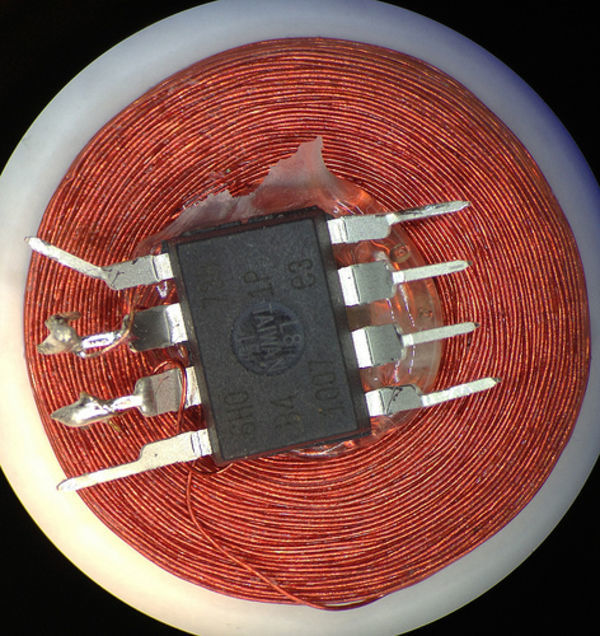
AVR RFID -- cloning RFID with only a ATTiny85 and an inductor
"I was inspired by Beth’s avrfid.S project to try to build a replacement for the multiple HID Prox cards that I carry for work. Her design is simultaneously a technical tour-de-force and an example of how badly we can abuse the Atmel chips. Here is the entire schematic: There is no connection to power and ground: the chip is powered through leakage current from the input pins. The AC waveform is fed directly into the pins: the internal protection diodes rectify it. During negative parts of the wave the silicon die’s inherent capacitance maintains state. The CPU clock is driven by the AC as well and depends on the ability of the coil to drive more current than the chip when DDRB is configured to pull the pins to the same potential." [...]
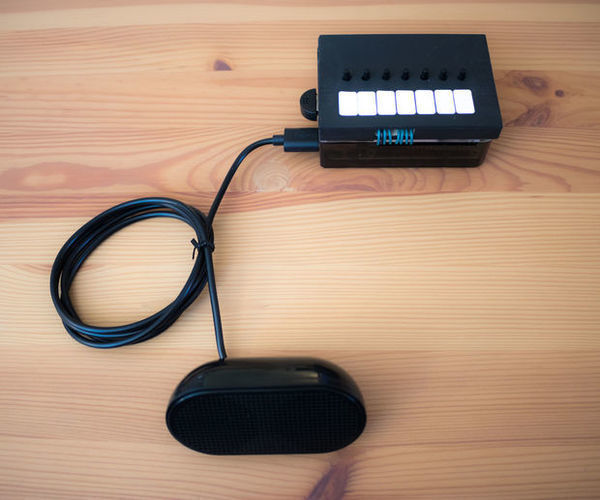
Playback Recorder With Raspberry Pi
"Hi everyone, In this instructable I explain how I made a playback recorder using Raspberry Pi. The device is a Raspberry Pi model B+, with 7 push buttons on top, a speaker connected to one of the Pi's usb ports, and a microphone connected to another usb ports. Each button is associated to a sound, so it can play 7 different sounds. The sounds are played after a brief push of the button. To record a new sound, simply push the button for more than 1 second, record after the beep, and let go the button at the end of the record. It doesn't get any simpler than that!" [...]
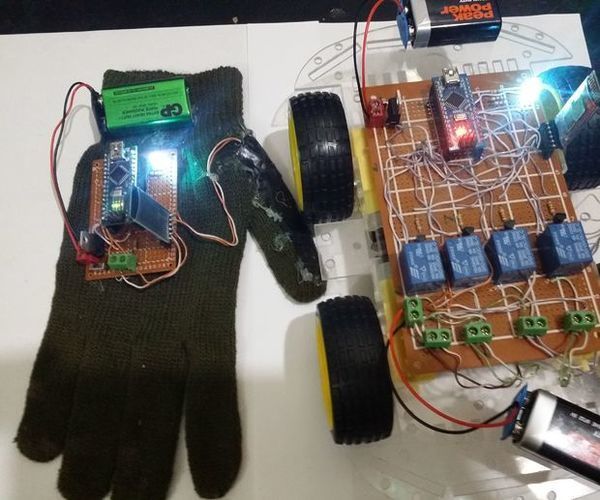
Smart Car Working by Movement of the Finger
"Thats my project smart car it not working by mobile or normal remotecontrol It works by a glove so the remote control is movement of my finger The flex sensor sense the movement of my finger and send to the Arduino a different value So with this value i did some position and make the Arduino send to the another Arduino in the car via the Bluetooth some data and make the car move by movement my finger And I put RGB LED one in the glove and another in the car so every movement the LED in the car and in the glove make the same colour I did 6 movements by my finger to move the car and 6 different colour LED in every movement And while my finger moves in position I didn’t Calibrated the LED will make a White light in both in the glove and in the car. " [...]

Autonomous Control of RPM of Engine Using Feedback System From a IR Based Tachometer
"There is always a need for automating a process,be it a simple/monstrous one.I got the idea to do this project from a simple challenge that i faced while finding methods to water/irrigate our small piece of land.The problem of no current supply lines and costly generators (to operate our pump) added to the difficulty. So what we decided to do is device a method which would be cheap and easy to use,even by a worker.We decided to mount the pump on our old scooter(running condition) and run it using the shaft of the scooter wheel.All fine and good,we made the mechanical assembly and the belt drive and tested it,and it was a success. But another problem was that,when the motor was running,a person always had to be near the scooter to monitor the RPM,and manually adjust it using throttle.So this project was made by us so that the worker can set the desired RPM he wants to make the engine run,and attend to other work in the farm. The setup consists of : A IR based tachometer(to measure RPM). A keypad to enter the RPM. A LCD display to show the monitored RPM and current RPM." [...]
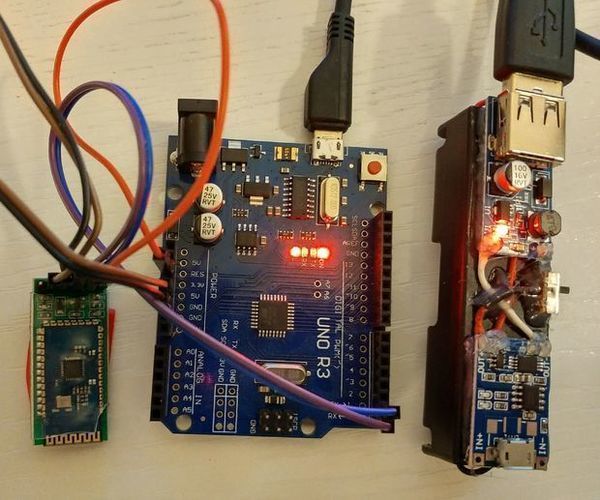
Arduino Remote/wireless Programming and Test With Homemade Power Bank
"The problem. I develop a sketch near PC and I use usb and serial to "debug" in this case I create the lib for DHT12, I deliver a version on github of the library. But arrive an issue: "when temperature go under 0 the readed value is wrong". Now I must test the problem on my freezer (:P) and I don't want to rewrite a sketch and use WIFI for a simple situation like so. So without rewrite sketch I want continue programming like previous, but my Arduino must go on my freezer. I need 2 thing, one is a battery, but I don't know how many test I must do so I need a rechargeable battery, and an adapter to work with microcontroller remotely, like Bluetooth." [...]
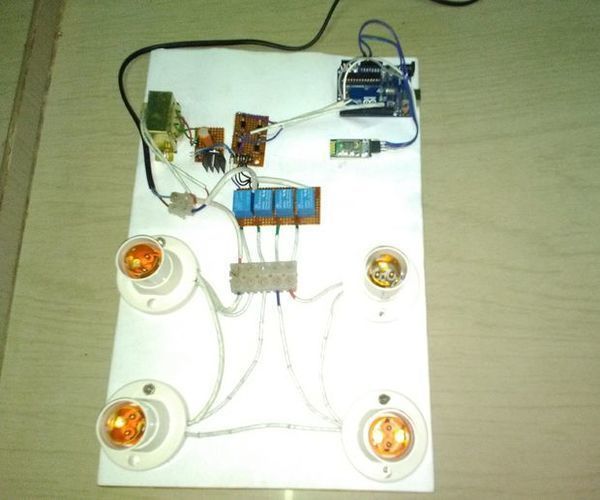
Mobile Controlled Smart Home Automation
"In this project the home appliances like Fan, Light, Motor, etc can be controlled easily with the help of smart mobile phones. In this project is very helpful to the old aged peoples. " [...]
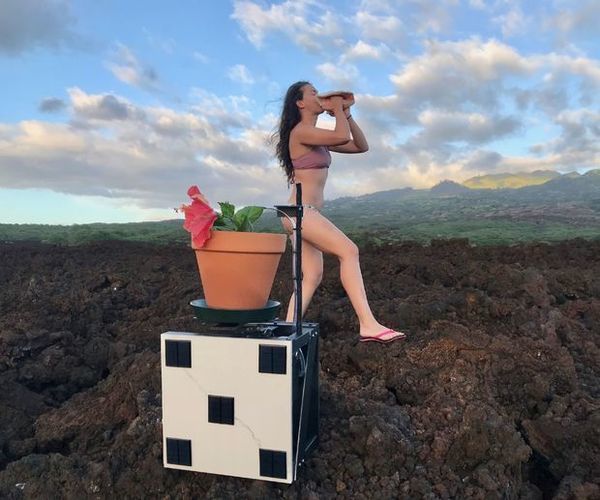
Solar Weight-Based Plant Management With ESP32
"Growing plants is fun and watering and caring for them is not really a hassle. Microcontroller applications to monitor their health are all over the internet and the inspiration for their design comes from plant's static nature and the ease of monitoring something that doesn't run around and sweat. I am relatively new to plant growth and guides on the internet seemed to be written by well meaning but not engineer types. A friend who I asked "how much do I water them..." replied the only way is to heft the plant and if it feels light you water it. He is very good at "growing". Sticking your finger into the soil does not really help much." [...]

Network Lab
"This instructable is kind of long and involved. There are several projects rolled into one to give me a portable network testing lab, allowing me to diagnose network problems, shark packets from wired and wireless networks, test patch cables and help to map wall ports to patch panels. The project uses a combination of Raspberry Pi and Arduino. It is likely that it all could have been done with the Pi but I am fairly new to it and each of the additions I made was a struggle to get working so the thought making a complete annex of another 2 projects was too much to bear. I hope that you find all (or sections) of this instructable useful as I believe it will make the network portion of my job easier. " [...]
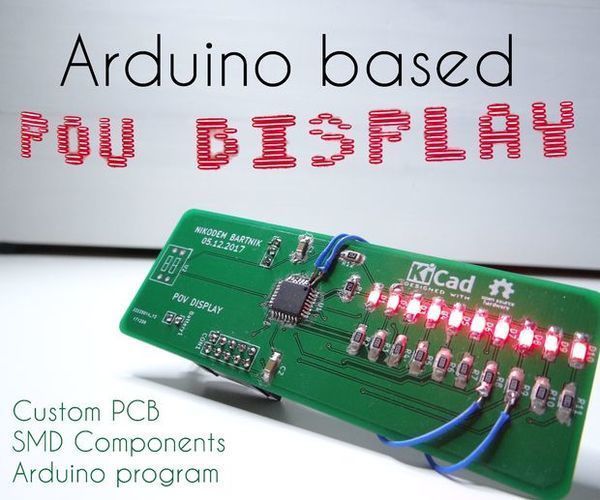
Simple Arduino Based POV Display
"Small handheld POV display based on Arduino, perfect project for beginners and not only to learn soldering small components and programming. It is simple so don't worry if you haven't any experience, you will be easy able to make this project. It involves making a PCB, (Printable Circuit Board) but you don't have to make it at home, you can use order it in a PCB manufacturer so you will get professional PCBs for super cheap price and you wouldn't have to deal with making them by yourself. We will learn to solder small SMD (Surface Mount Devices) and also some bigger through hold components. Don't forget to check out video above, it explains everything about this project and show how it works. So let's start making!" [...]

Falling in Stm32: Remote Control for Home Media Center
"This is a complete prototype for home media center remote control based on smt32 micro controller, stm32f103c8t6 known as 'bluepill' board. Suppose, you are using a PC for home media center. It is very flexible solution, which allows you to place huge video library into internal hard drive, or you can play video from the network, for example youtube or so, you have no trouble with codecs or video playing at all, because it is very easy to update the software player any time. The main disadvantage of this solution is that you should use mouse and keyboard to control your playback. The IR remote control is much mode convenient for this. In this article i will show how to create own remote control using chip bluepill board." [...]

DIY : LED Sneakers
"The DIY "LED sneakers" are high top sneakers embedded with a WS2812 Addressable LED Strip and a Qduino Mini Microcontroller. The LEDs are easily programmable and re-programmable for countless customizations of color, pattern, and animation. In this tutorial we will go through the step-by-step process of building this project. " [...]
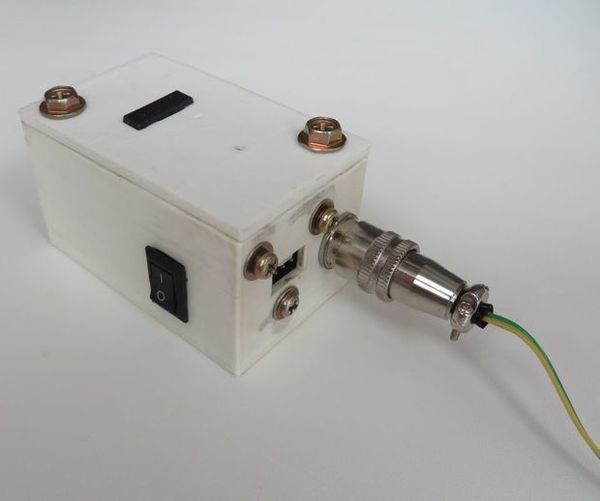
DIY Temperature Logger With STM32F103, MicroSD Card and DS18B20
"I'm currently building a temperature logger for some guys doing a research in biology. Tried to make it as small as possible, with temperature sensor that can be crammed in small space. Since the first revision slash prototype of the device was incredibly simple to make and featured easily procured parts, I decided to write up every step of making the device. The detailed guide with sources and schematics can be found on my blog, I'll be publishing slightly abridged version here. " [...]

ATMega1284P Guitar and Music Effects Pedal
"I have ported the Arduino Uno ATMega328 Pedalshield (as developed by Electrosmash and in part based on work at the Open Music Lab) to the ATMega1284P which has eight times more RAM than the Uno (16kB versus 2kB). An additional unexpected benefit is that the Mega1284 build has a much lower noise component - to the extent that when I compare the Uno and the Mega1284 using the same support circuitry it is not unreasonable to describe the Uno as "noisy" and the Mega1284 as "quiet". The larger RAM means that a much longer delay effect can be obtained - and that is demonstrated by the Arduino sketch example that I have included. The background breathing noise when using the Tremelo effect is also (almost) absent with the ATMega1284. I started by bread-boarding the Uno-based pedalSHIELD as in the Electrosmash specification but I did not have the same RRO OpAmp as specified. As a result I ended up with a circuit which I considered to give acceptable results." [...]

Toothbrushtimer With the ATtiny13
"People often dont brush their teeth well, or do it too quickly, especially children. This tool may help them to spend the right amount of time at the right area. I have made and published a toothbrushtimer before, but it was not robust enough to survive long in the harsh enviroment of a bathroom, and the extra complexity of the quiz was distraction from the toothbrushing. This timer will guide you through 4 phases of 30s for each corner of the mouth, followed by 10s to clean the tongue. I have no idea what the officially recommended times are, but these seem quite reasonable to me. The timer presented here has the following features: Very short code: 724 bytes fits on a cheap 8-pin ATtiny13A microcontroller." [...]
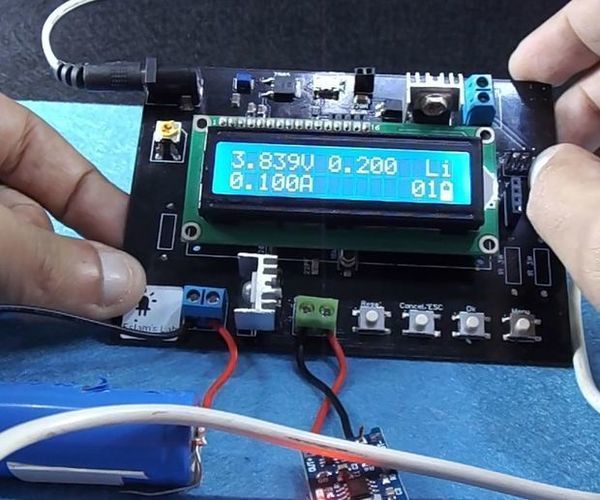
Battery Tester and Charge Monitor
"Hello guys For long time I was harvesting lithium ion batteries for powering my projects BUT Sometimes I was getting bad batteries that look fine So Ive made battery tester device that can test the battery and tells you the output voltage and current. Also identify the battery type and measure the real capacity. " [...]
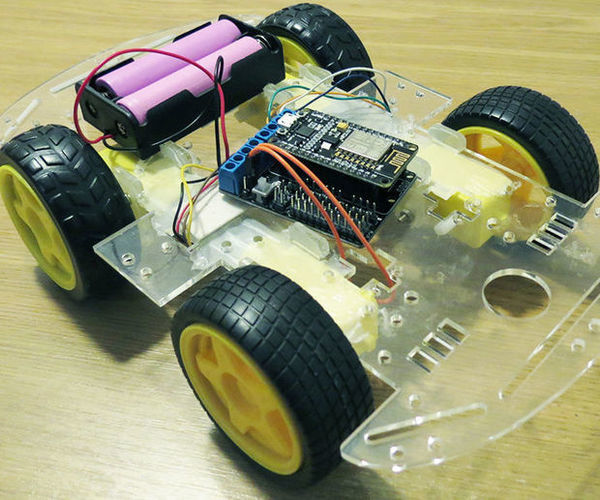
Voice Controlled WiFi Car
"In this project, I'll show you how make voice controlled car with esp motorshield and MIT app Inventor. " [...]

Arduino Crypto Currency Display
"A small display that can display the current price of basically any crypto currency available. Built using an ESP8266. Introduction: Simple $10 Crypto Currency Display Hello Everyone! Want a fun way to track the prices of crypto currencies? Tired of checking the prices online? Why not get a device to do it for you!" [...]
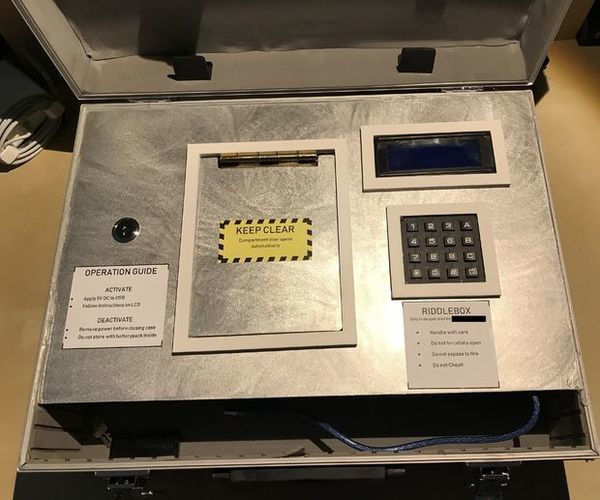
Arduino Riddlebox
"In this Instructable I am going to show you how to make an Arduino powered Riddlebox. I made this to add a bit of fun to my girlfriends actual christmas present, which I hid inside the compartment of the box. Once 5V are applied to the USB lead, the Arduino powers on and the LCD shows a short tutorial and then a sequence of ten riddles, which need to be solved to open the servo operated compartment, which can hold a gift or present. There is also a sneaky, password protected, settings menu for resetting progress and opening the compartment. I used what I could find at my local hardware store and 3D printed the rest. Obviously you can customise the Riddlebox by adding more sensors or leaving out some parts." [...]

Weather/Matrix Lamp
"In this Instructable I describe the design, construction and programming of a LED matrix lamp. The design resembles an ordinary lamp, but the interior has been replaced by a matrix of ws2812 LEDs. The control is done by means of a Raspberry Pi, so that the whole can be programmed according to your own wishes. The lamp is about 12 inch (30 cm) high with a diameter of 4 inch (10 cm). The outside mainly consists of a glass cylinder. With more than 40 steps it has become quite a comprehensive Instructable." [...]
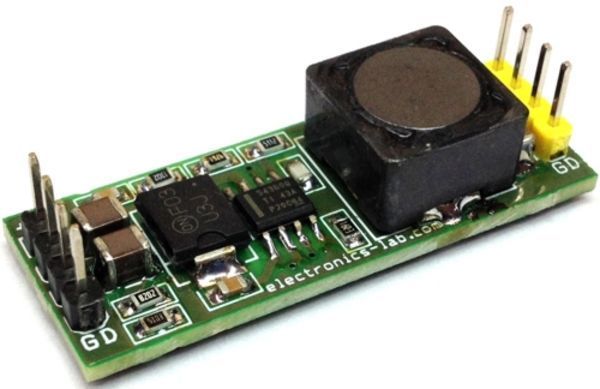
60V input 5V @3A output DC-DC Converter for Industrial and Automotive
"This is a 60 V 3A step down DC-DC converter. Sample applications are: 12 V, 24 V and 48 V Industrial, Automotive and Communications Power Systems. The TPS54360 is a 60 V, 3 A, step down regulator with an integrated high side MOSFET. The device survives load dump pulses up to 65V per ISO 7637. Current mode control provides simple external compensation and flexible component selection. A low ripple pulse skip mode reduces the no load supply current to 146 μA." [...]
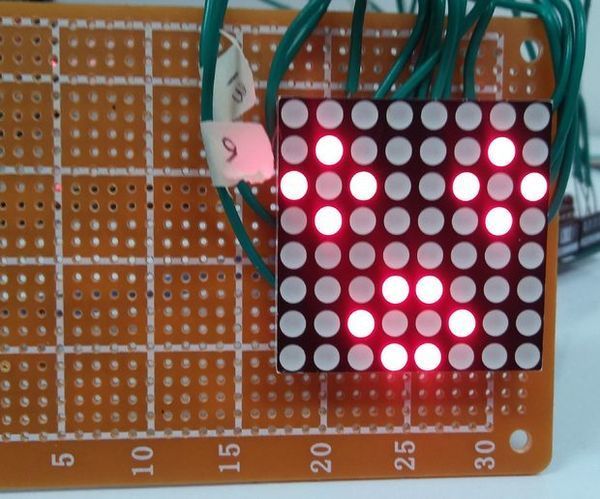
8x8 LED Matrix Using Arduino
"Create your own 8x8 LED matrix (no ic driver) using arduino :)" [...]
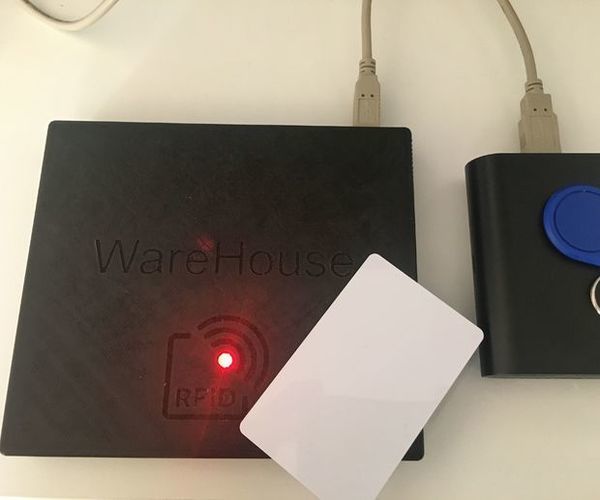
EAL - RFID Inventory Management
"This Instructable will show you how to build an inventory management system using RFID. The system is build upon an Arduino connected to a Raspberry Pi 3. The arduino reads RFID tags in shelves that the operator puts on the sensor itself. The ID of the shelf gets sent to the Raspberry Pi which in turn processes it and checks a database. The Raspberry Pi hosts a SQL server which can later be accessed through a Windows forms application, on a seperate computer on the LAN. " [...]
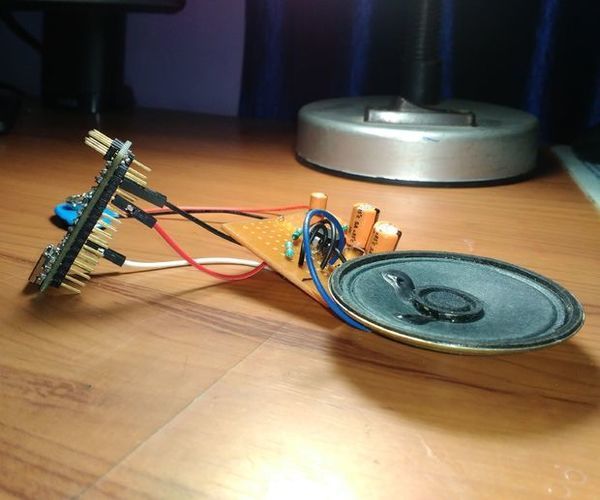
Arduino TTS ( Text to Speech )
"Hi Guys today in this tutorial I will teach you how to make your Arduino talk without any external module. Here we can use this in numerous projects like speaking thermometer, Robots and many more. So without much wasting time let's start this project. " [...]

DIY Binary Alarm Clock
"Hello reader, What you can see in the pictures, is my little binary alarm clock, that displays the time using 18 individually adressable RGB LED's. I originally planned to build a "normal" clock that uses Led's as it's hands. Unfortunately I did not have 60 adressable RGB LED's at hand. Sooo, what do you do when you want to display a number with as few LED's as possible? You go binary, and that is exactly what I did. The result is this rather interesting looking little alarm clock and today we are going through all of the steps needed, to build one yourself." [...]

How to build custom IoT hardware with Arduino
"Recently I wanted to create an Arduino-based low-power Internet of Things (IoT) device for makers, with built-in sensors that could be used to deliver sensor data from any location to the cloud, and potentially control connected devices such as thermostats, lights, door locks, and other home automation products. Along the way, I learned that creating a new IoT device, from idea to prototype to final product, is not as simple as I thought it would be, and there was no "ready-to-go" development device to start with. However, by figuring out how to do it, I created a new product called Siguino, an open source IoT circuit board, that I hope will make it easier and faster for other people to create their own IoT products. Siguino is based on a low-power version of the Arduino Pro Mini that has onboard sensors and antenna and runs off a single battery. It also leverages Sigfox, a low-power wide area network designed to connect IoT devices to the cloud. This article describes the stages to get from a very messy breadboarded (but working) prototype to a final, custom-designed printed circuit board (PCB) that others will hopefully be able to use." [...]

Design IoT Solutions Using Python and Zerynth
"Develop IoT applications in Python with Zerynth on any 32-bit microcontroller and control your insights with Ubidots. Do you prefer to code in python? If so, Zerynth is a suite of professional development tools that supports Python or hybrid C/Python firmware development for 32-bit micro-controllers and the most common prototyping boards: Arduino DUE, ST Nucleo, Particle Photon and Electron, Flip&Click, ESP32, ESP8266, and more. In this guide we will explore Python code development within the Zerynth Studio and how to visualize your results using the simplicity of Ubidots data visualization. Zerynth is not just another programming library for Arduino associated sensor kits. Zerynth is a set of professional development tools developed from scratch to allow you access to the embedded world in just a few clicks." [...]

Salat Time
"An Arduino code that displays on a small 0.98" OLED SSD1306 Date/Time and also calculates and displays Salat Time for a given town" [...]
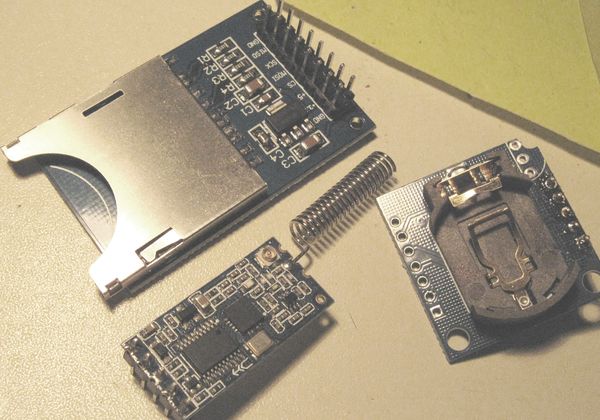
Build an Arduino-based 4-Channel Data Logger
"In many applications data collection is remote and Wi-Fi and Internet are not available. In addition and in lieu of other backup opportunities, a simple on-demand logger would be a nice resource for custom applications that can accommodate the simple handshake protocol and have a serial output available to be saved into the removable SD card. This project is an on-demand logger using an Arduino Nano-based controller. Like several similar SD serial loggers, the Arduino, used in this application is a popular choice for development and has the advantage that it creates this inexpensive data utility by exploiting the SD.lib, resident in the Arduino IDE. This project differs from other modules because the logging feature uses a handshake protocol to support up to four external serial link requests. The configuration includes a real time clock (RTC) and supports a HC-05 Bluetooth (BT) module for clock setting and report monitoring." [...]
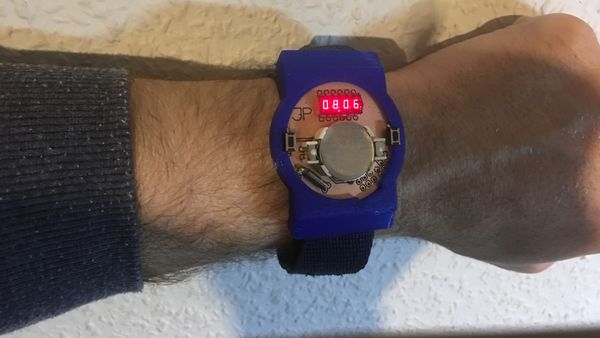
RetroWristWatch
"Retro wristwatch using a 4 digit bubble display" [...]

Send Temperature & Humidity to Blynk App (Wemos D1 Mini Pro).
"This Instructable looks at using the Wemos D1 Mini Pro to send datta (Temperature & Humidity) to the Blynk APP. " [...]
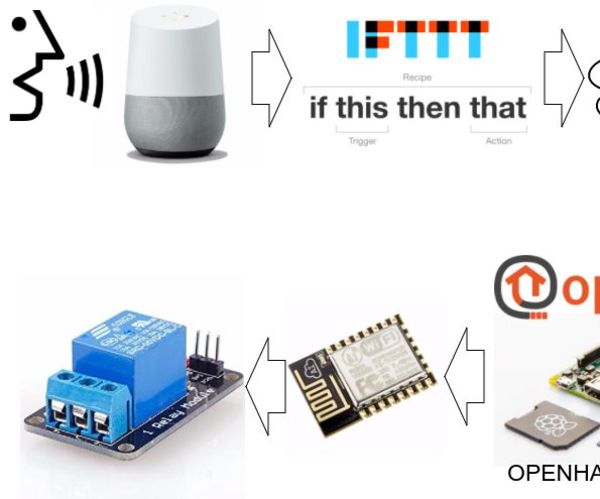
Google Home Controlled Power Outlet
"My girlfriend always wanted to build a smart home. So we build the infrastructure and first item of the smart home, a remote controlled outlet switch that you can control using a control panel or using voice commands (if you have google home or google assistant) Here you can find step by step of what we did. " [...]
That's all Folks!


